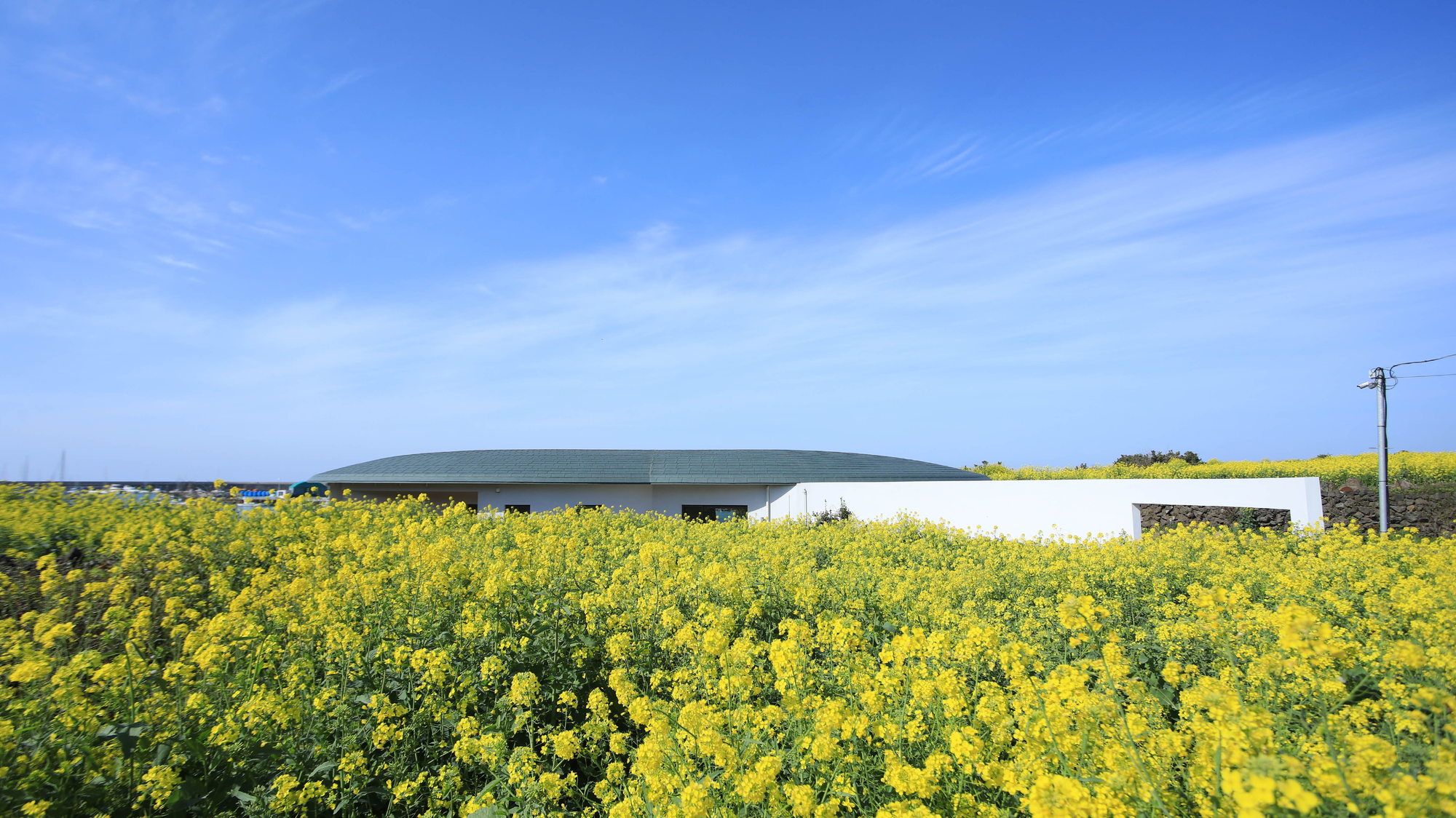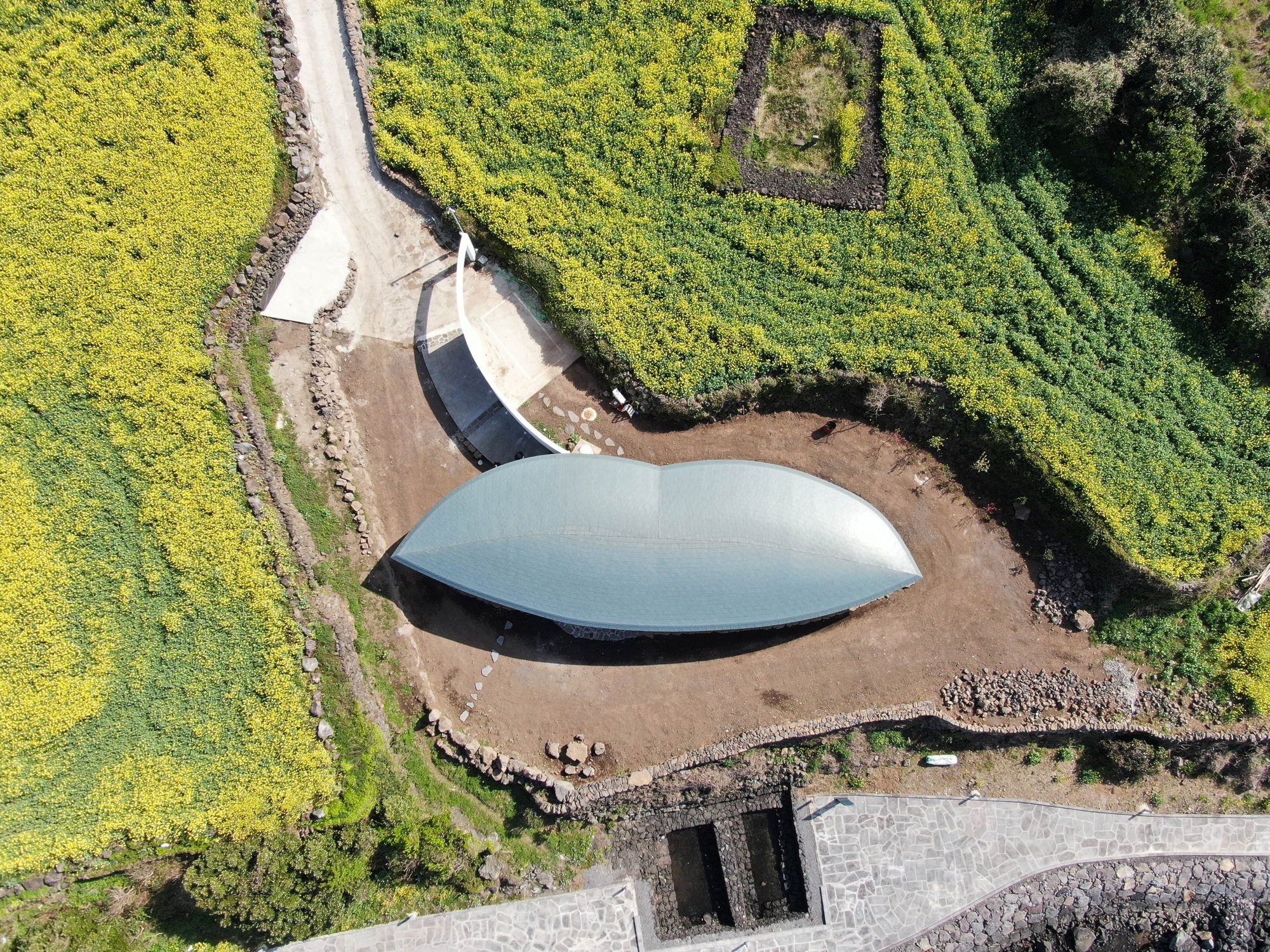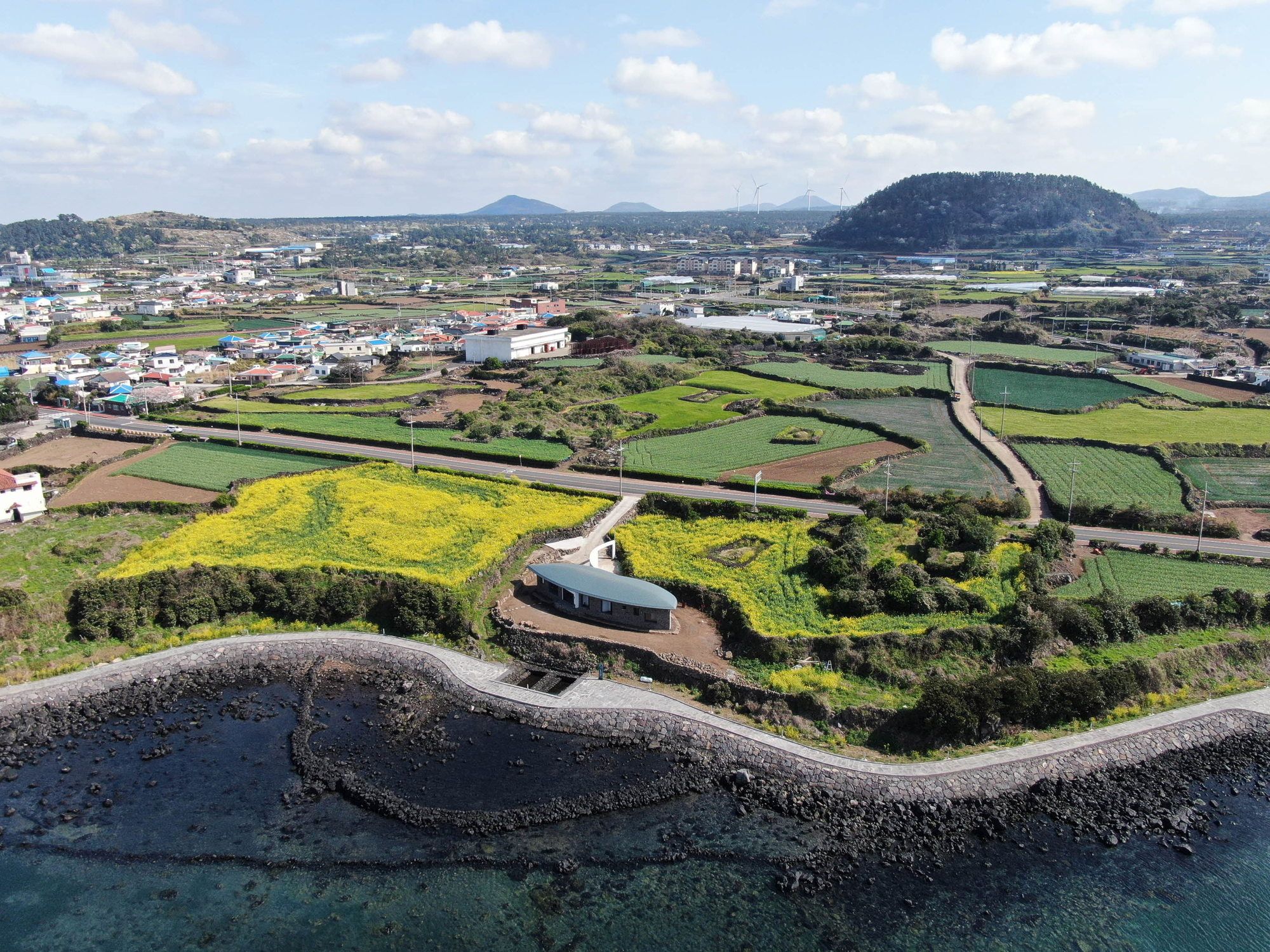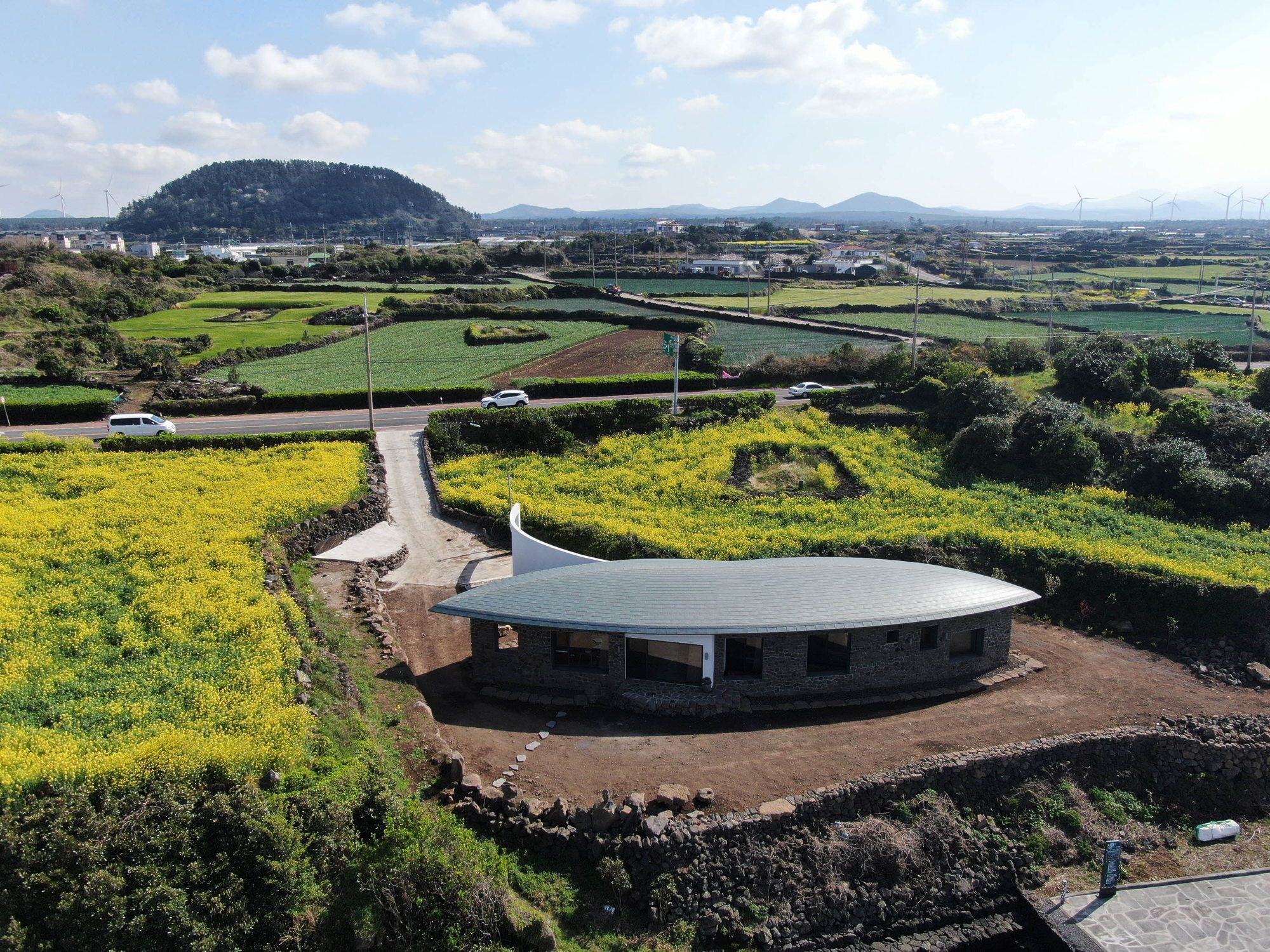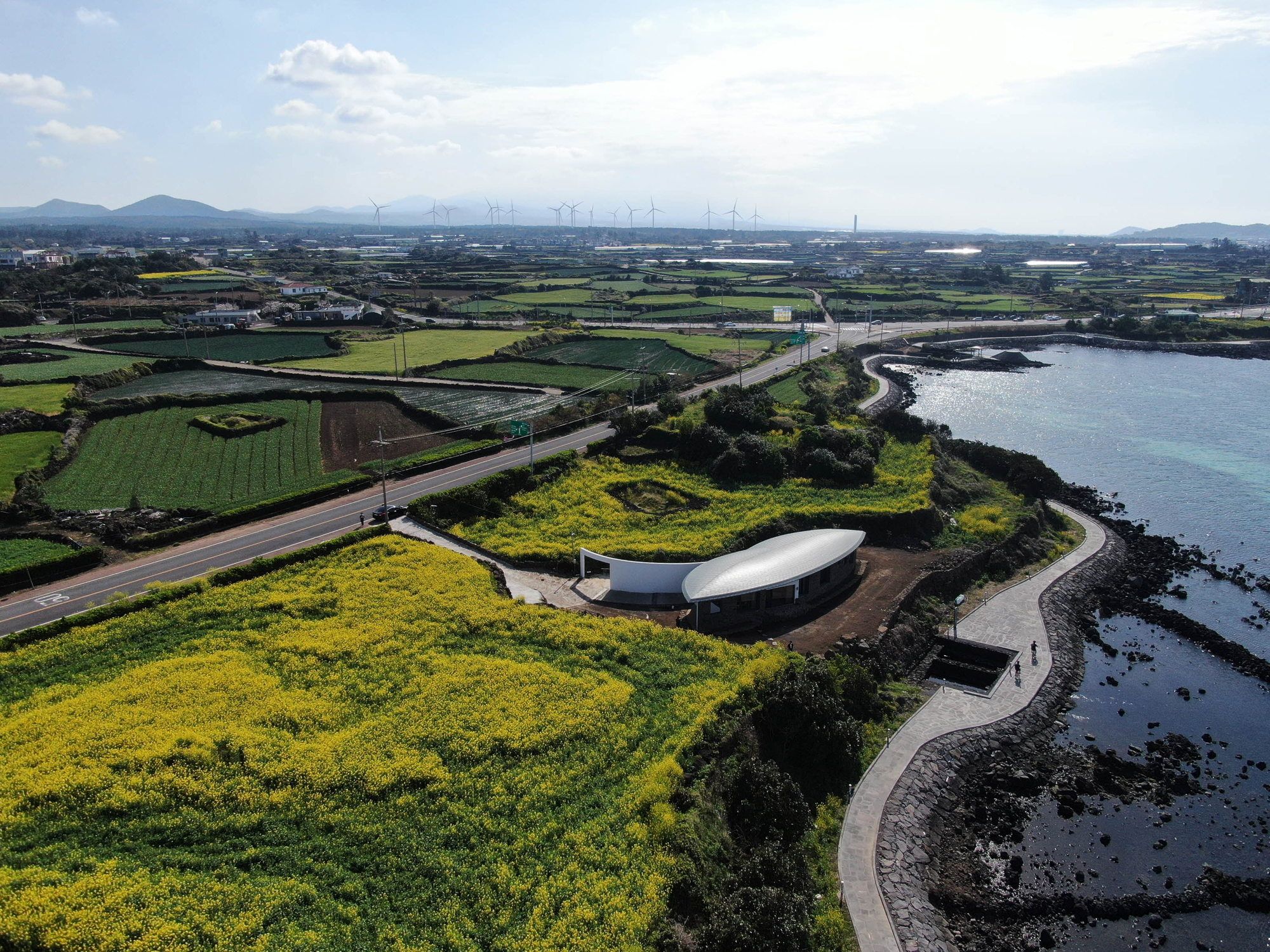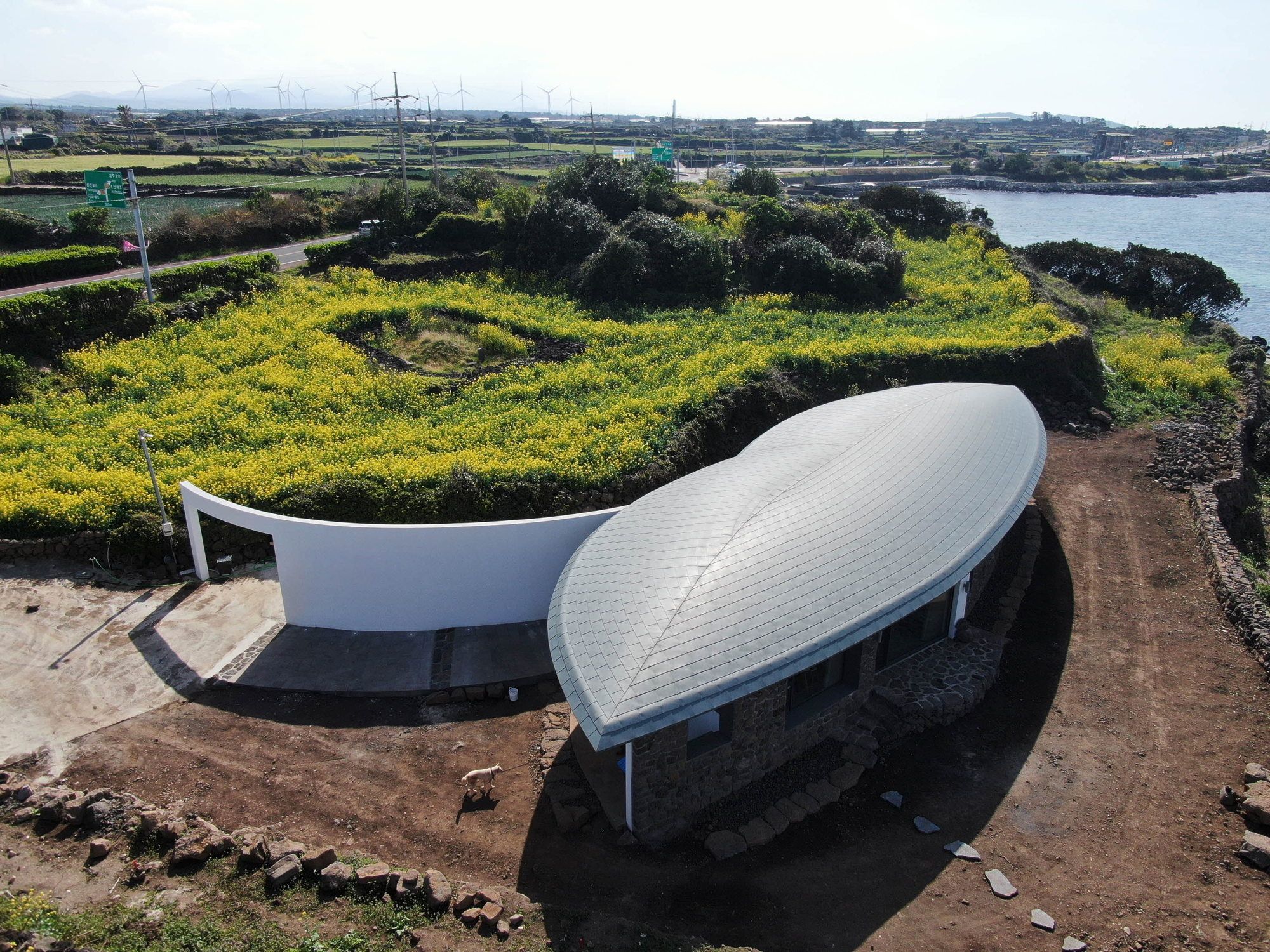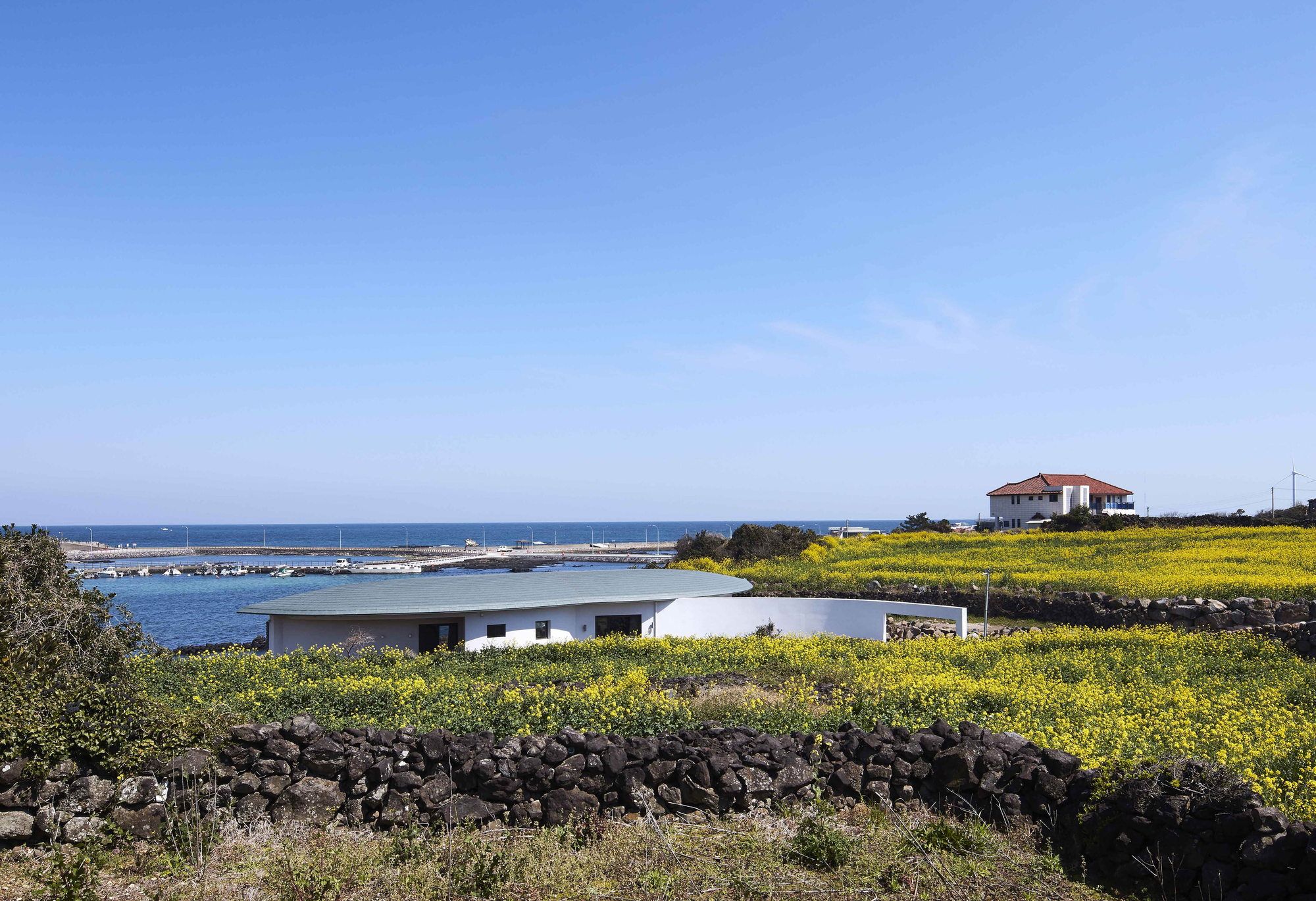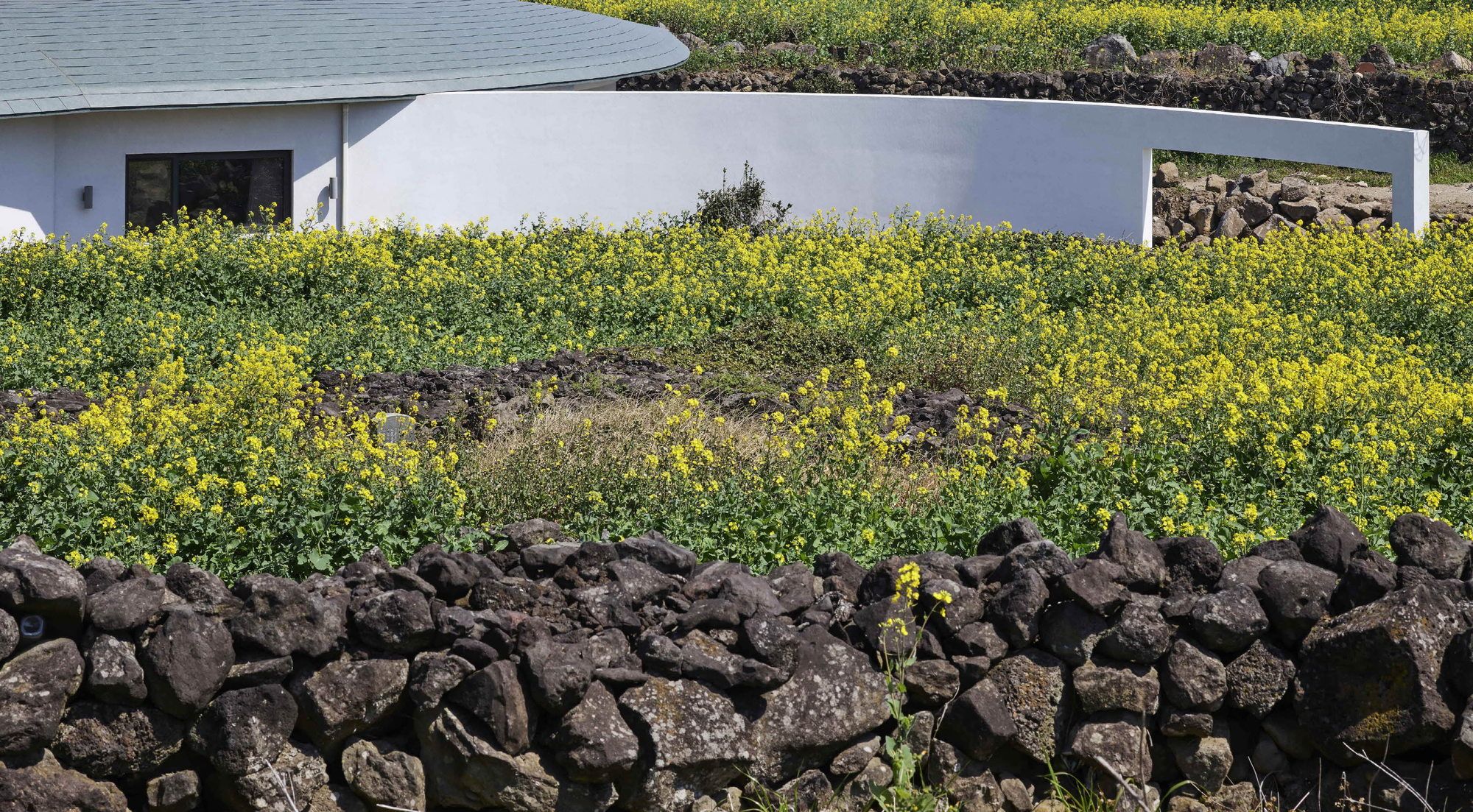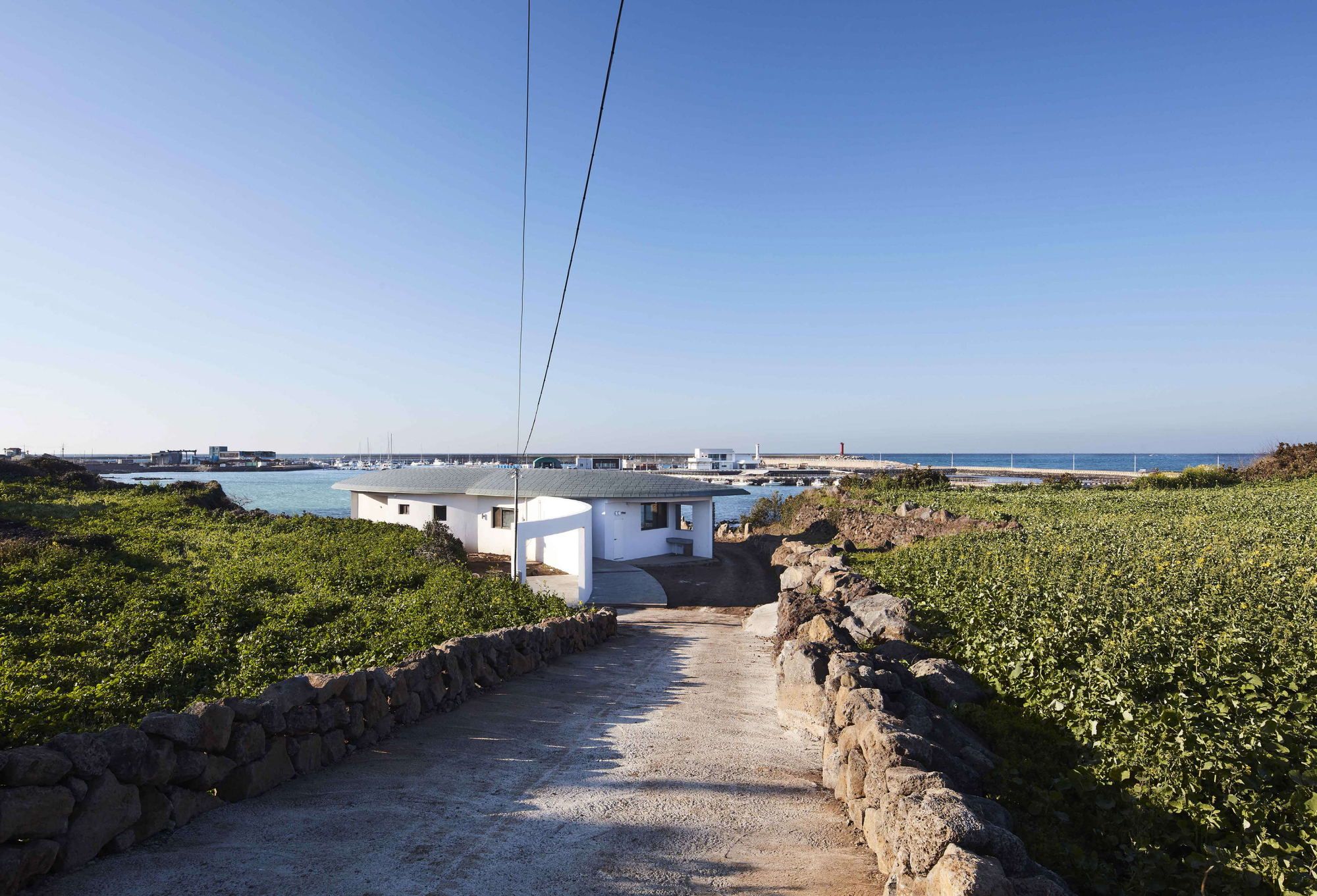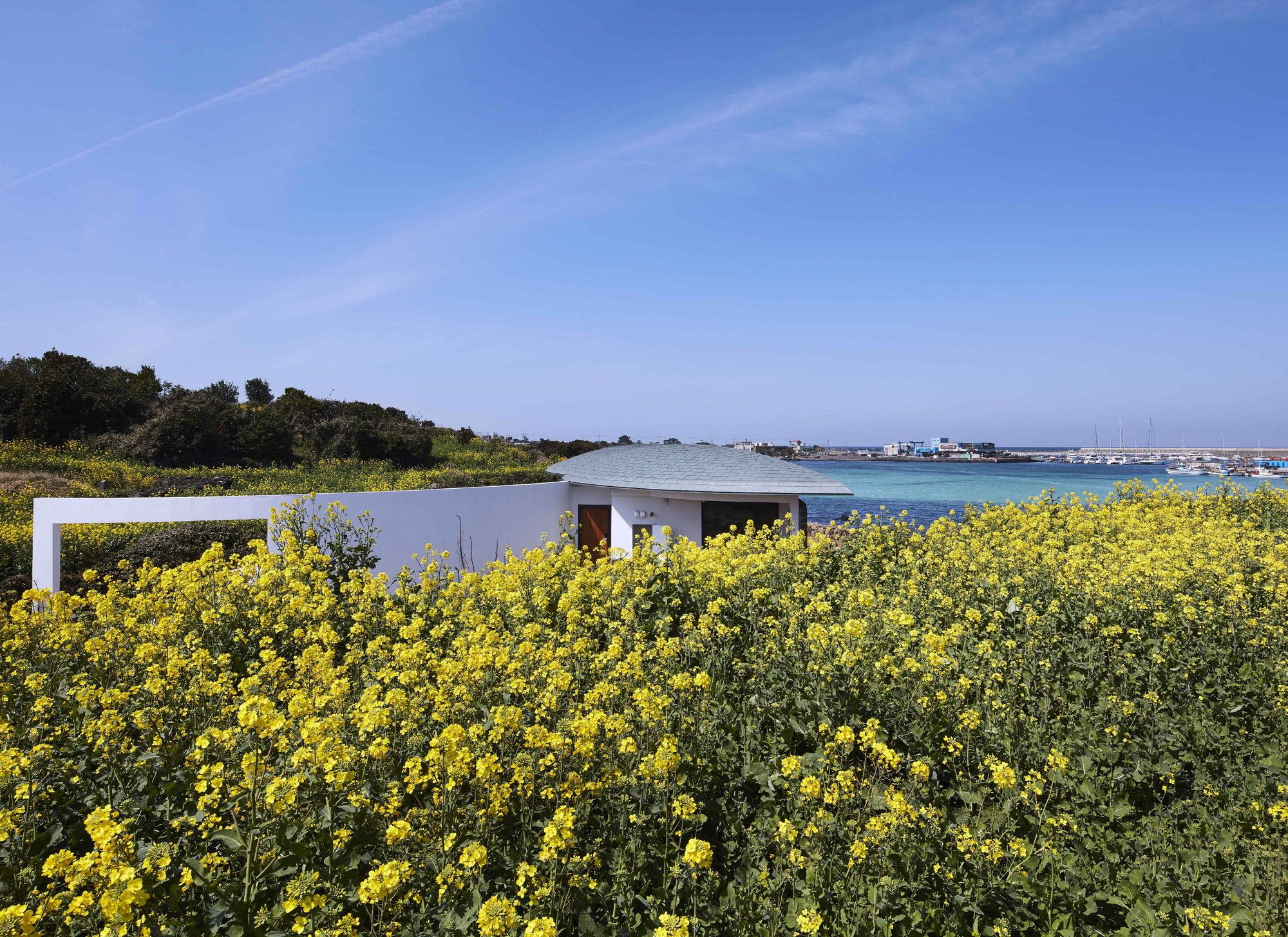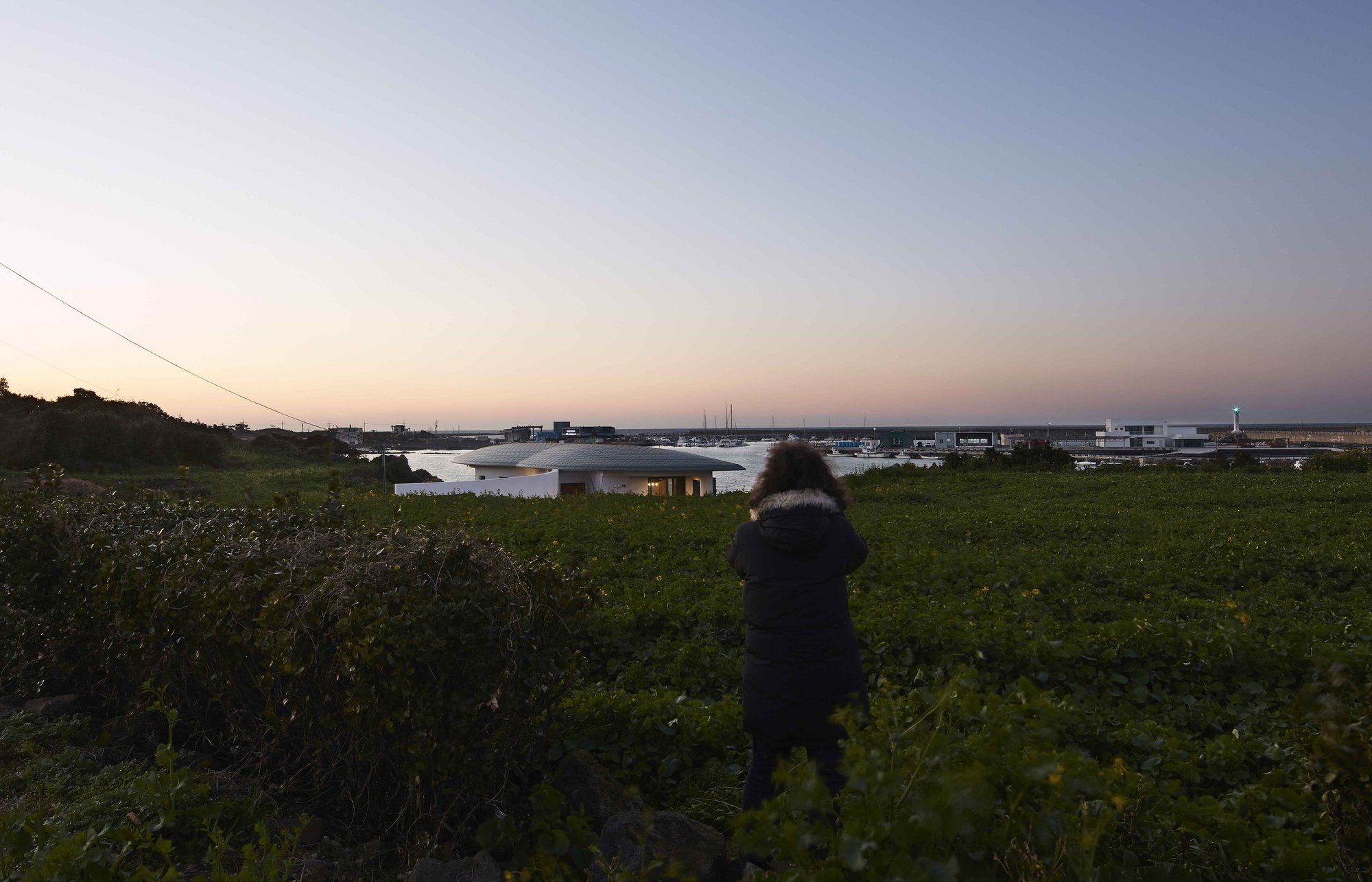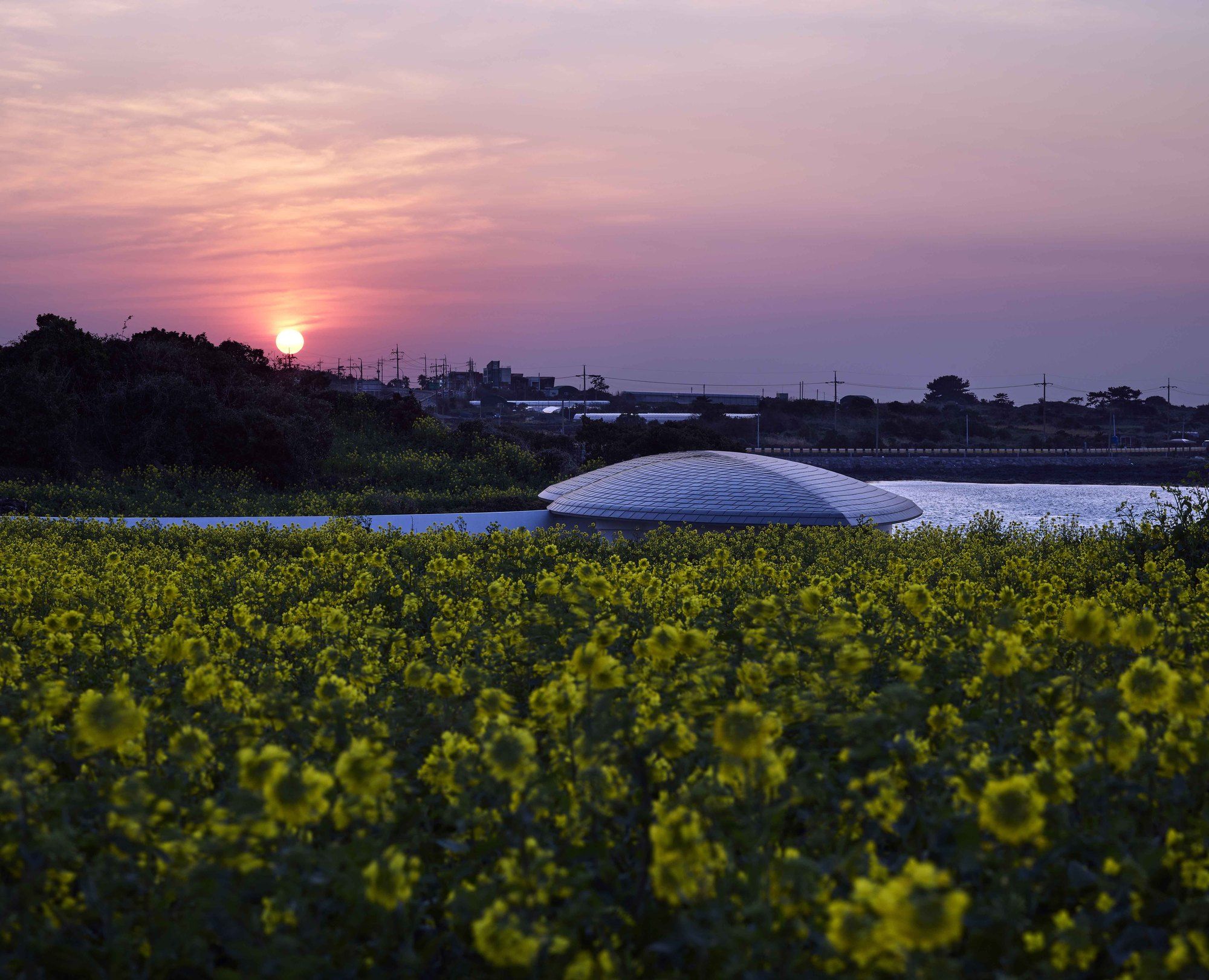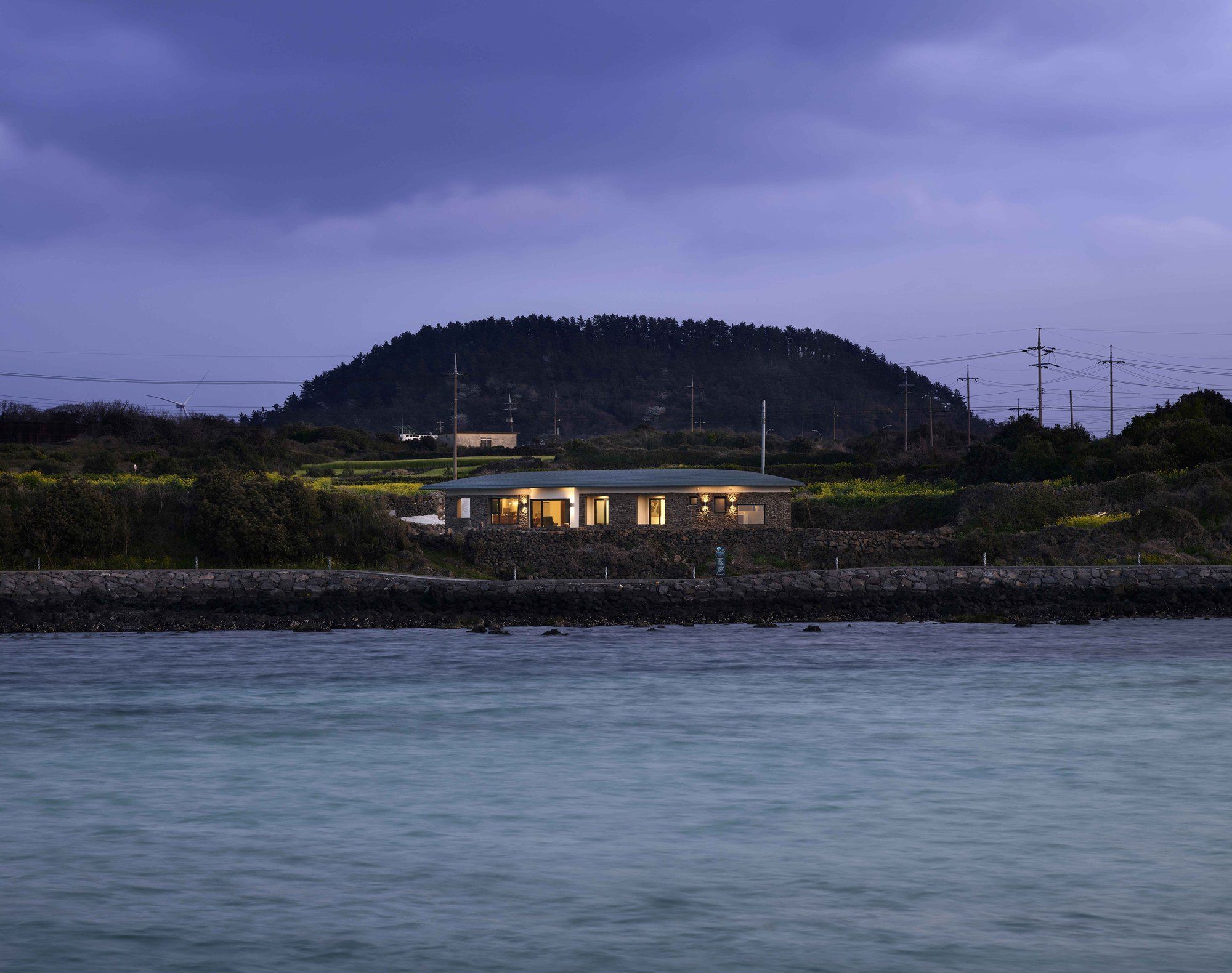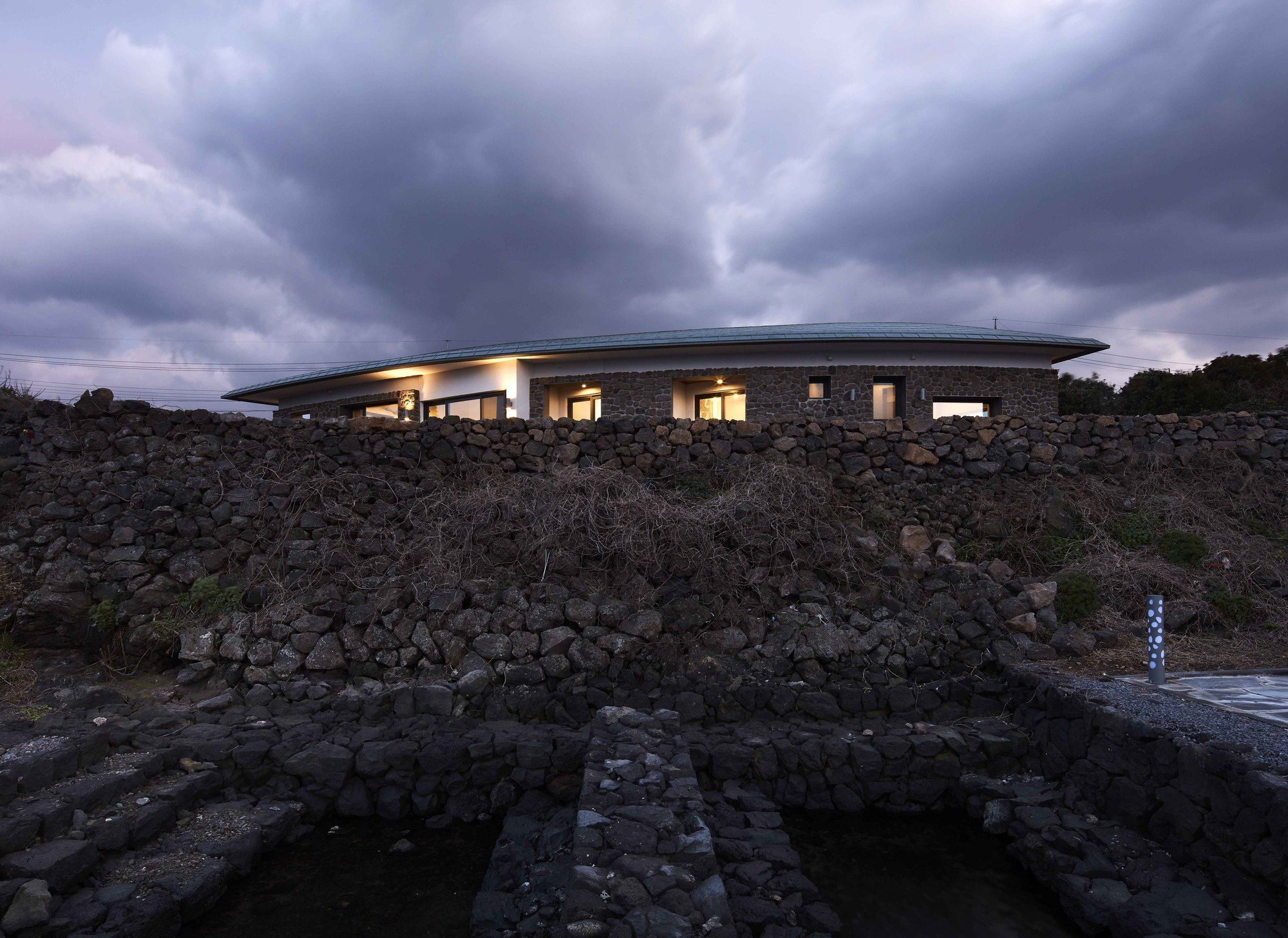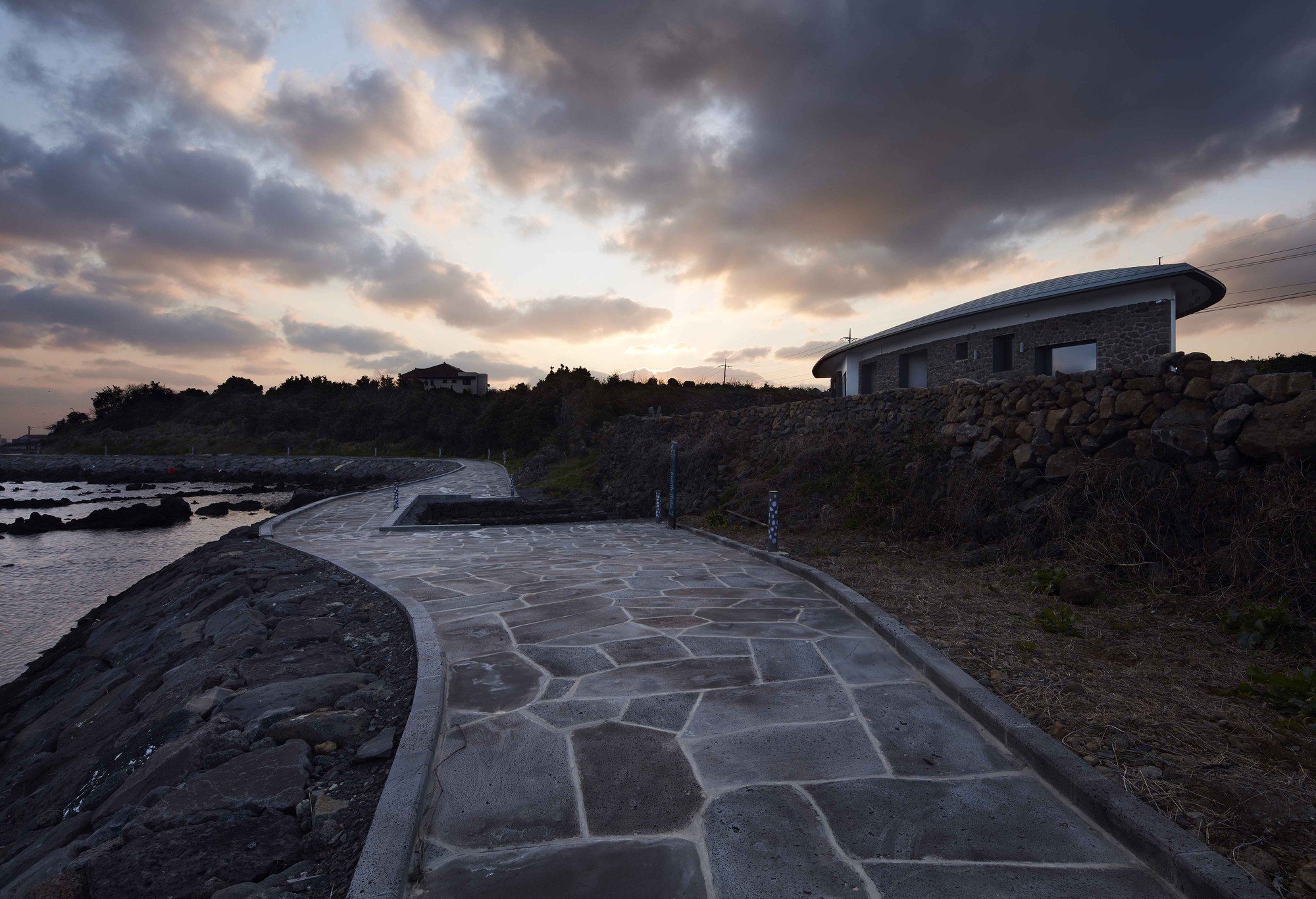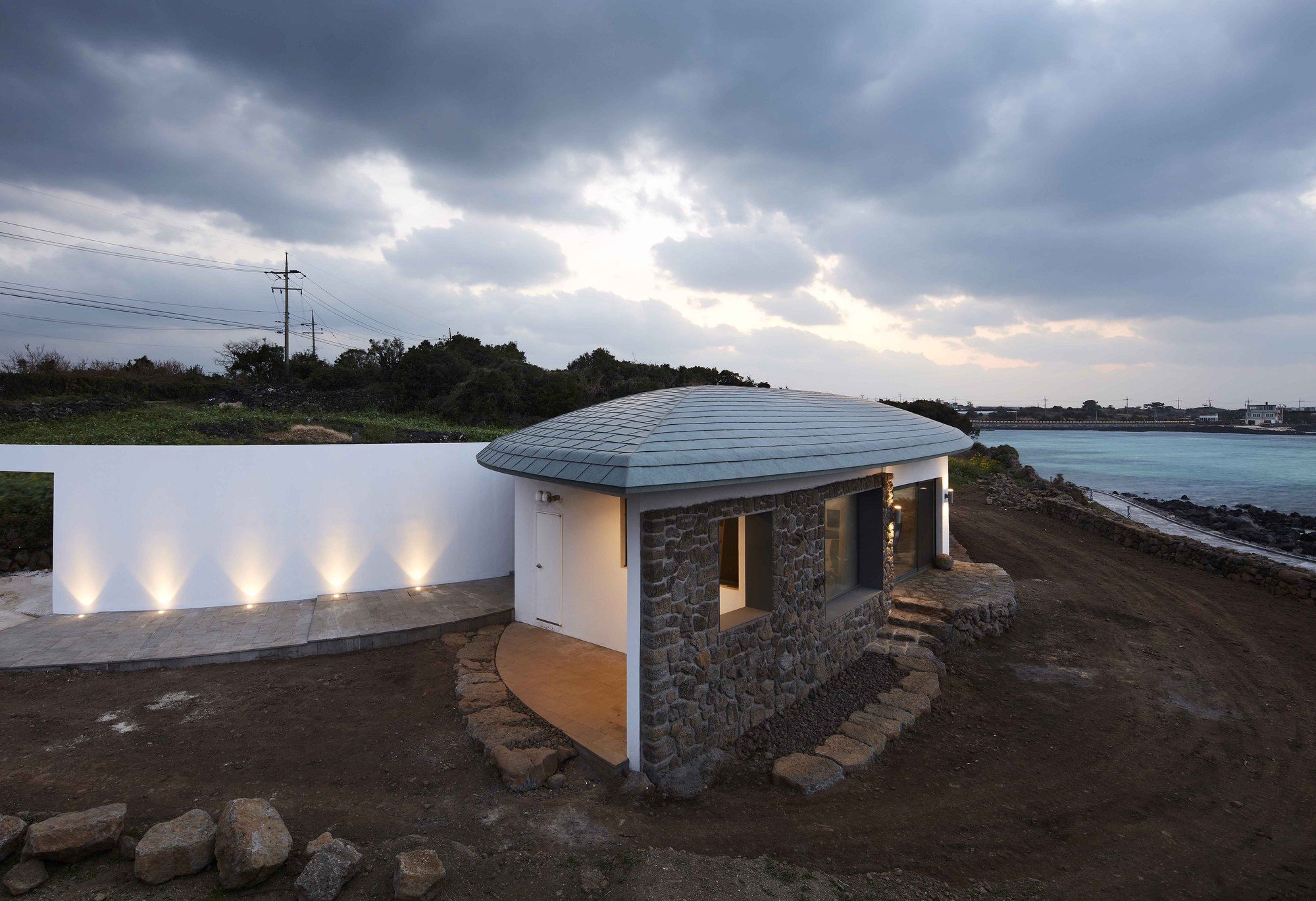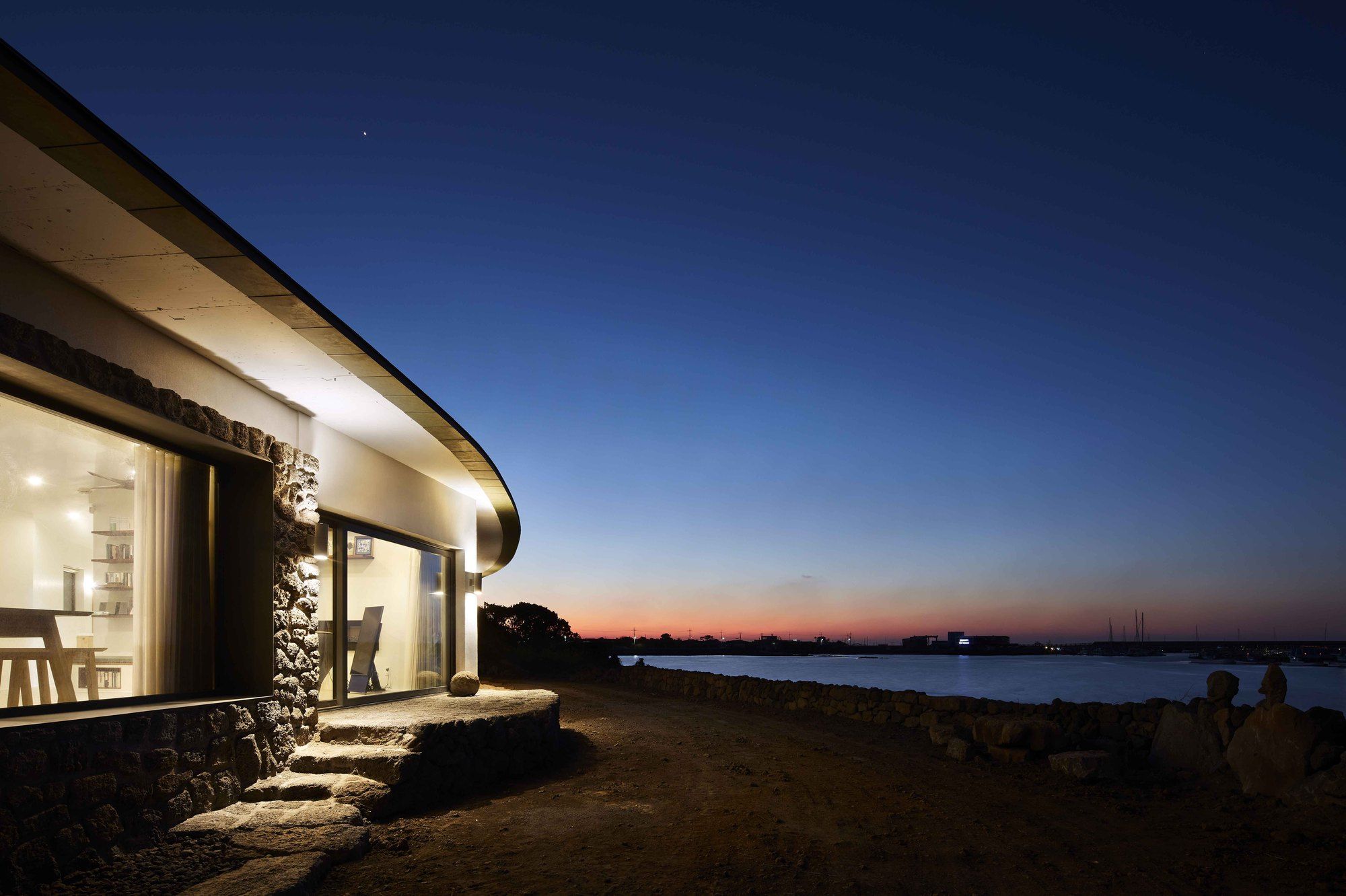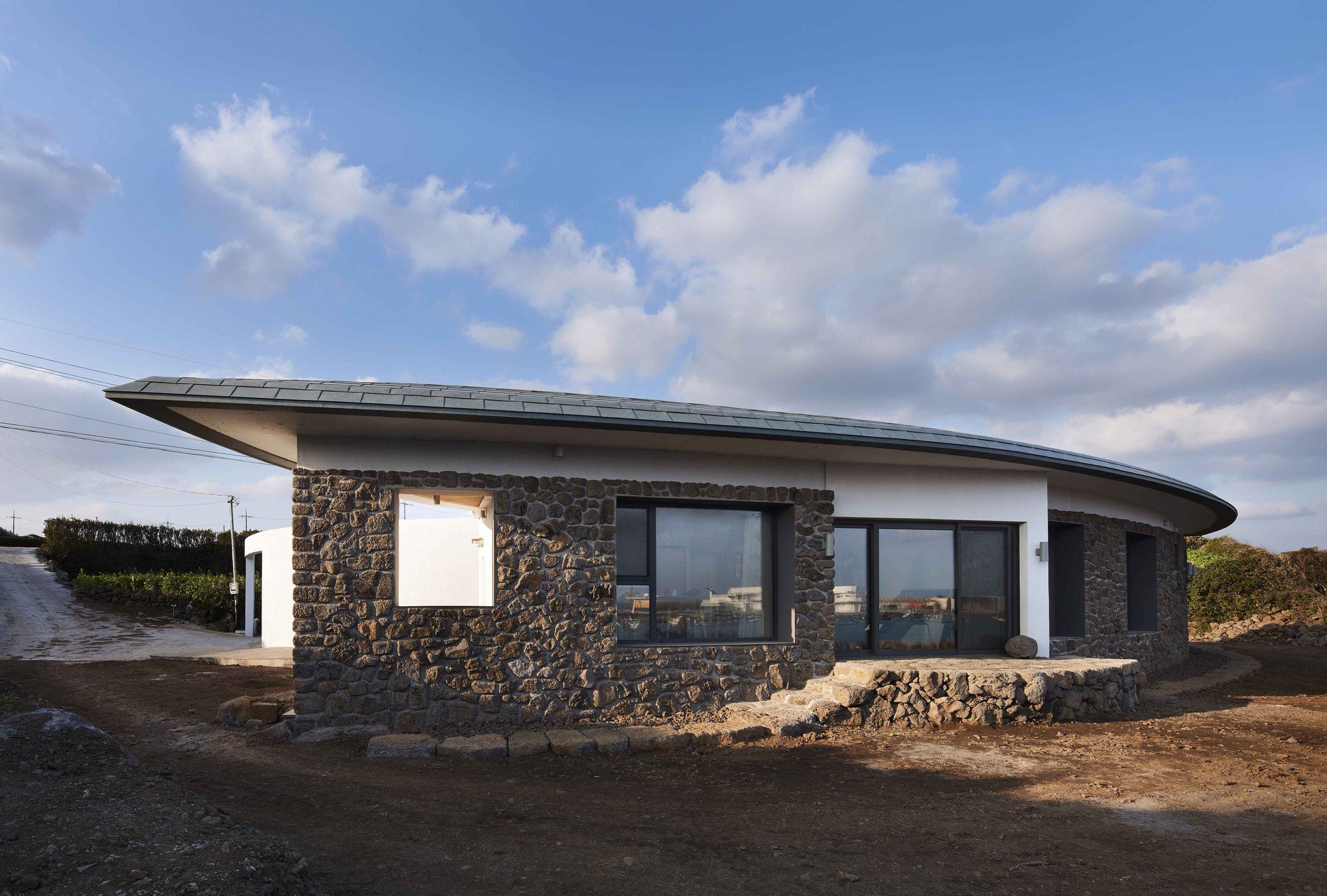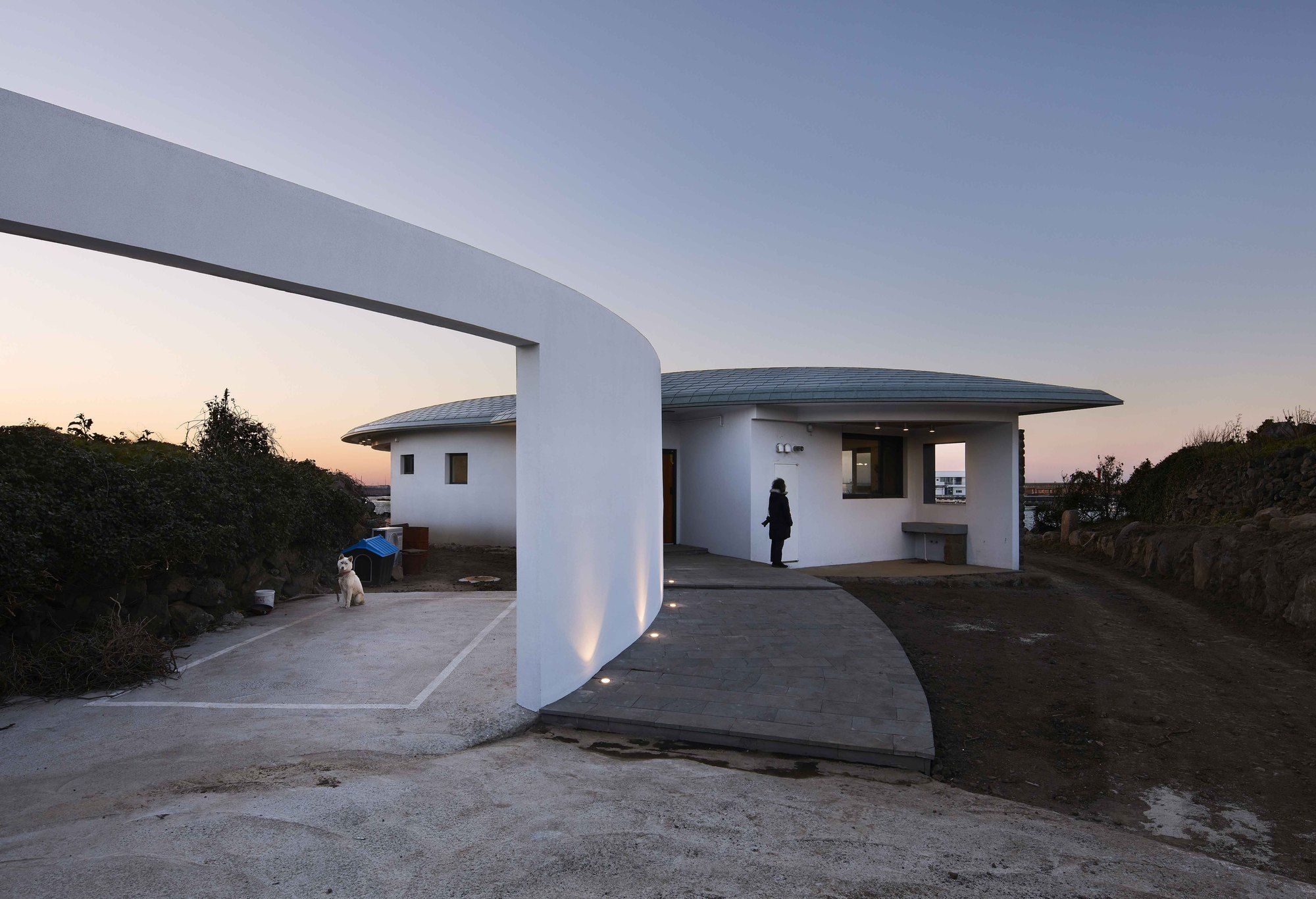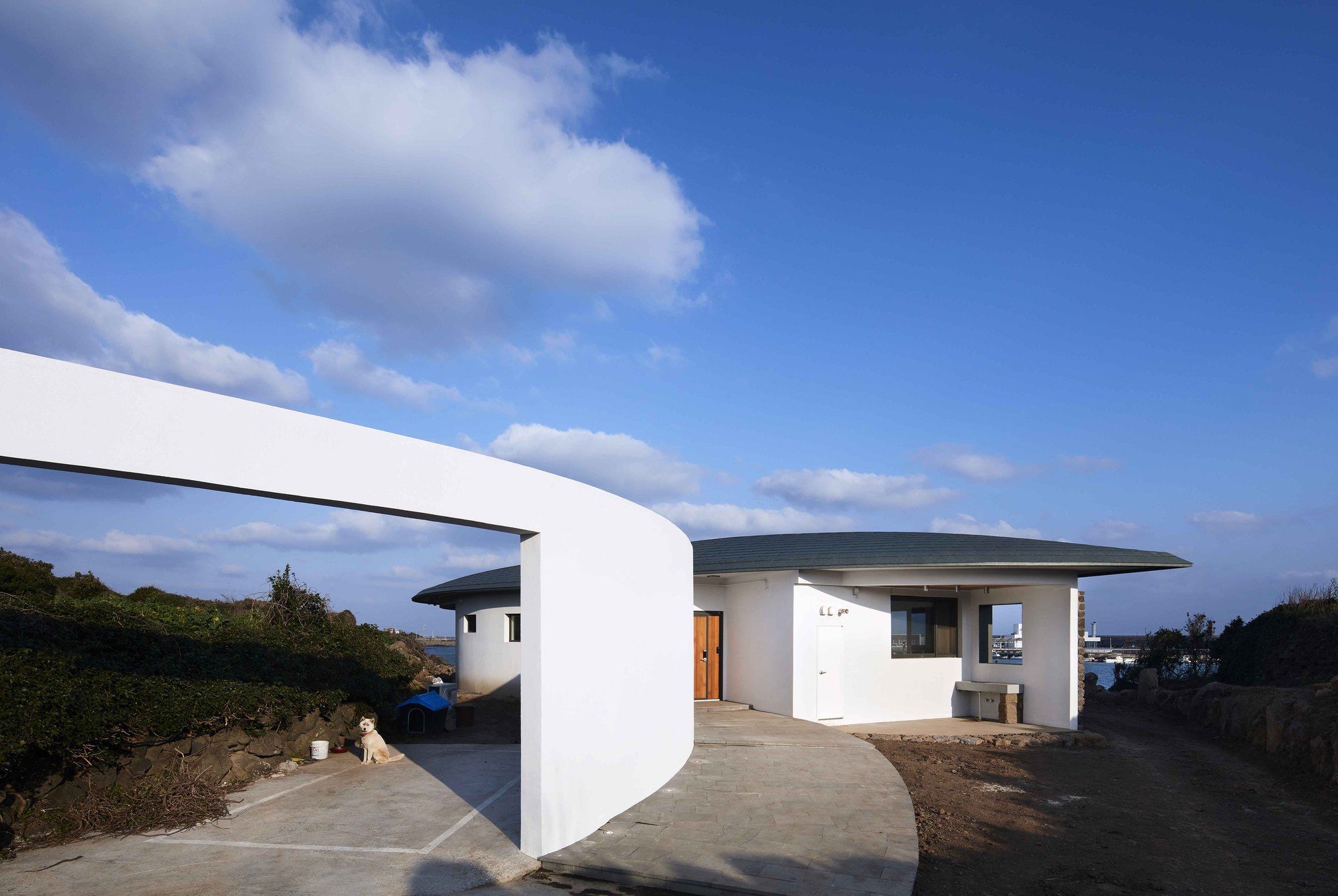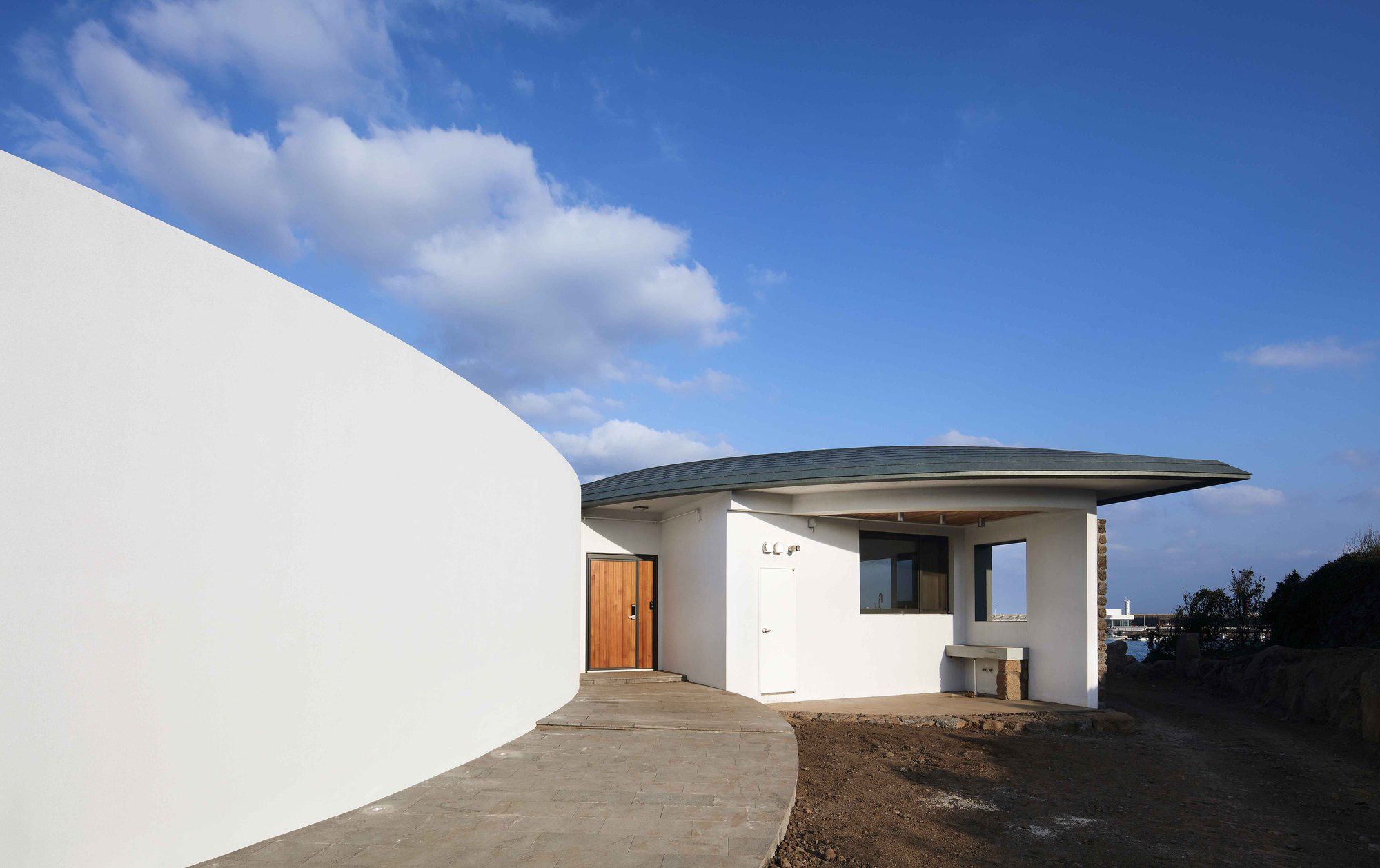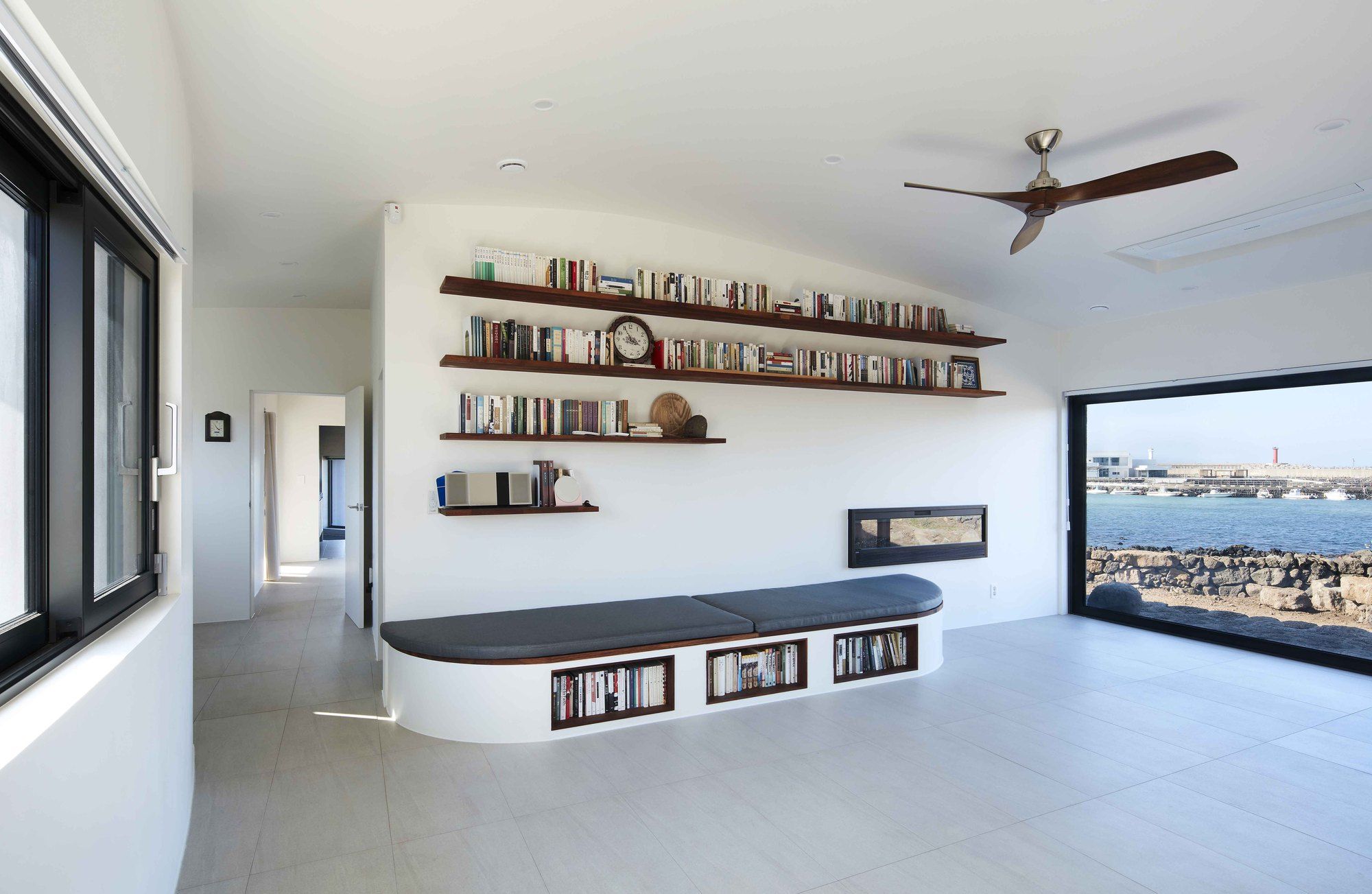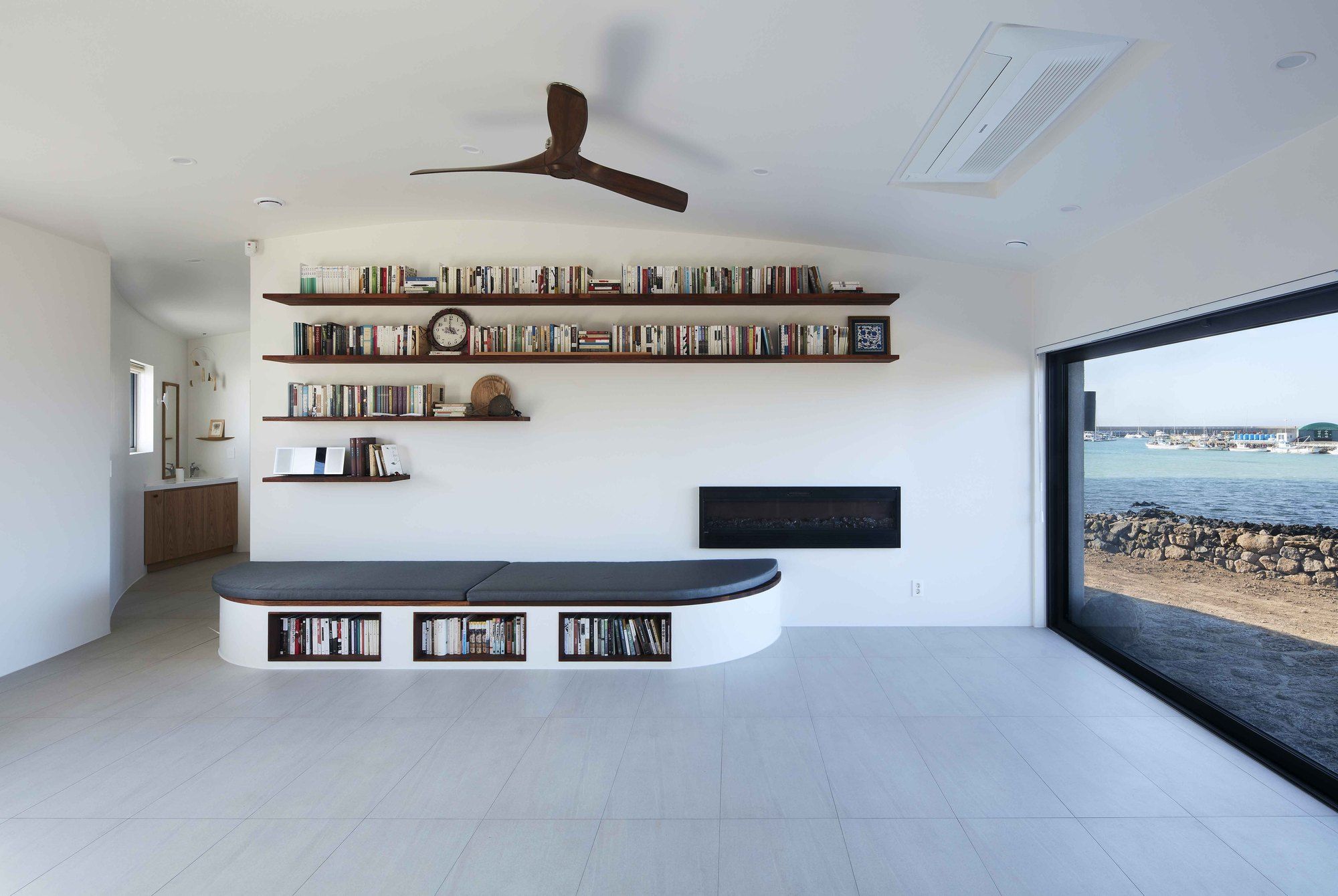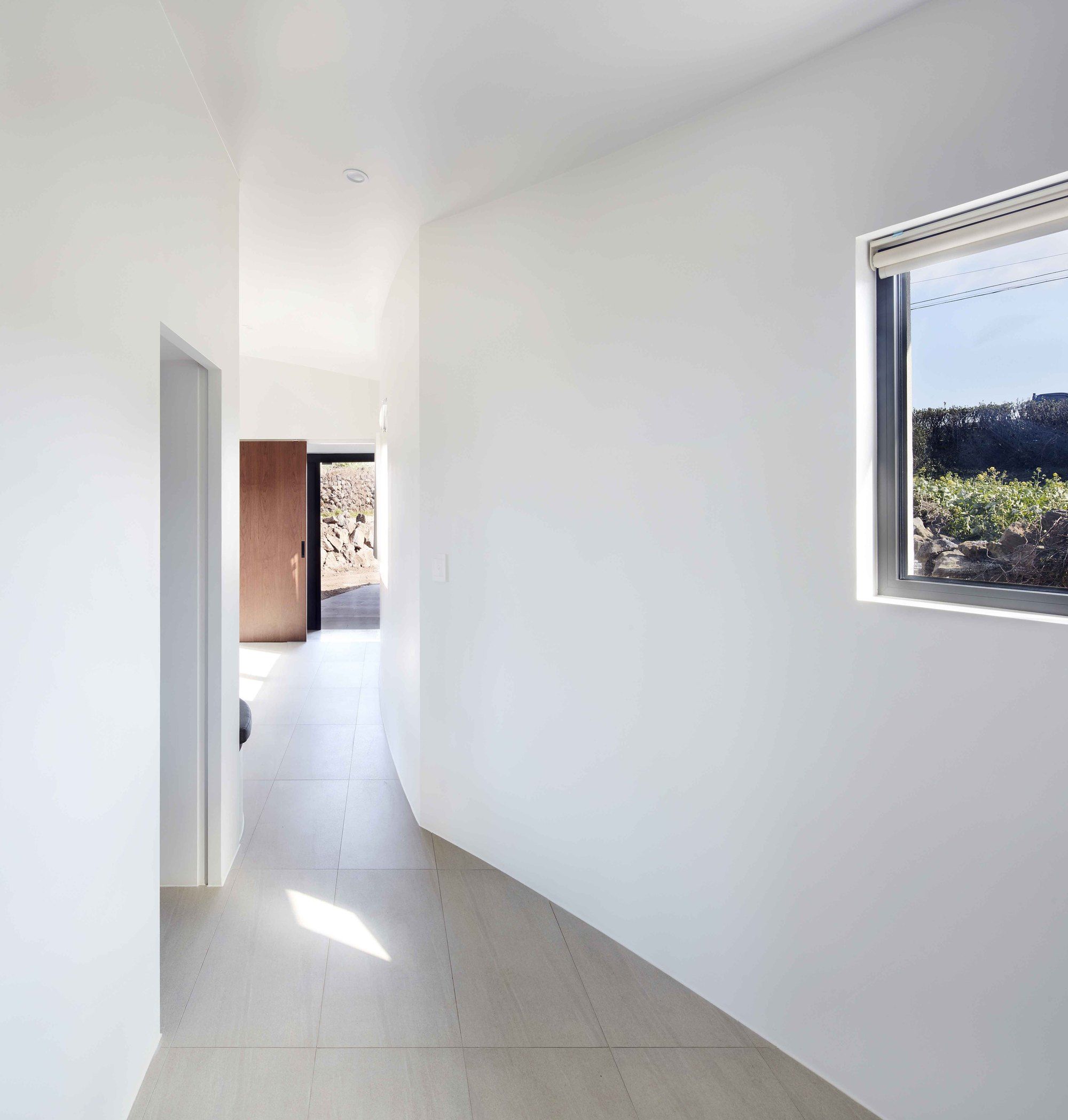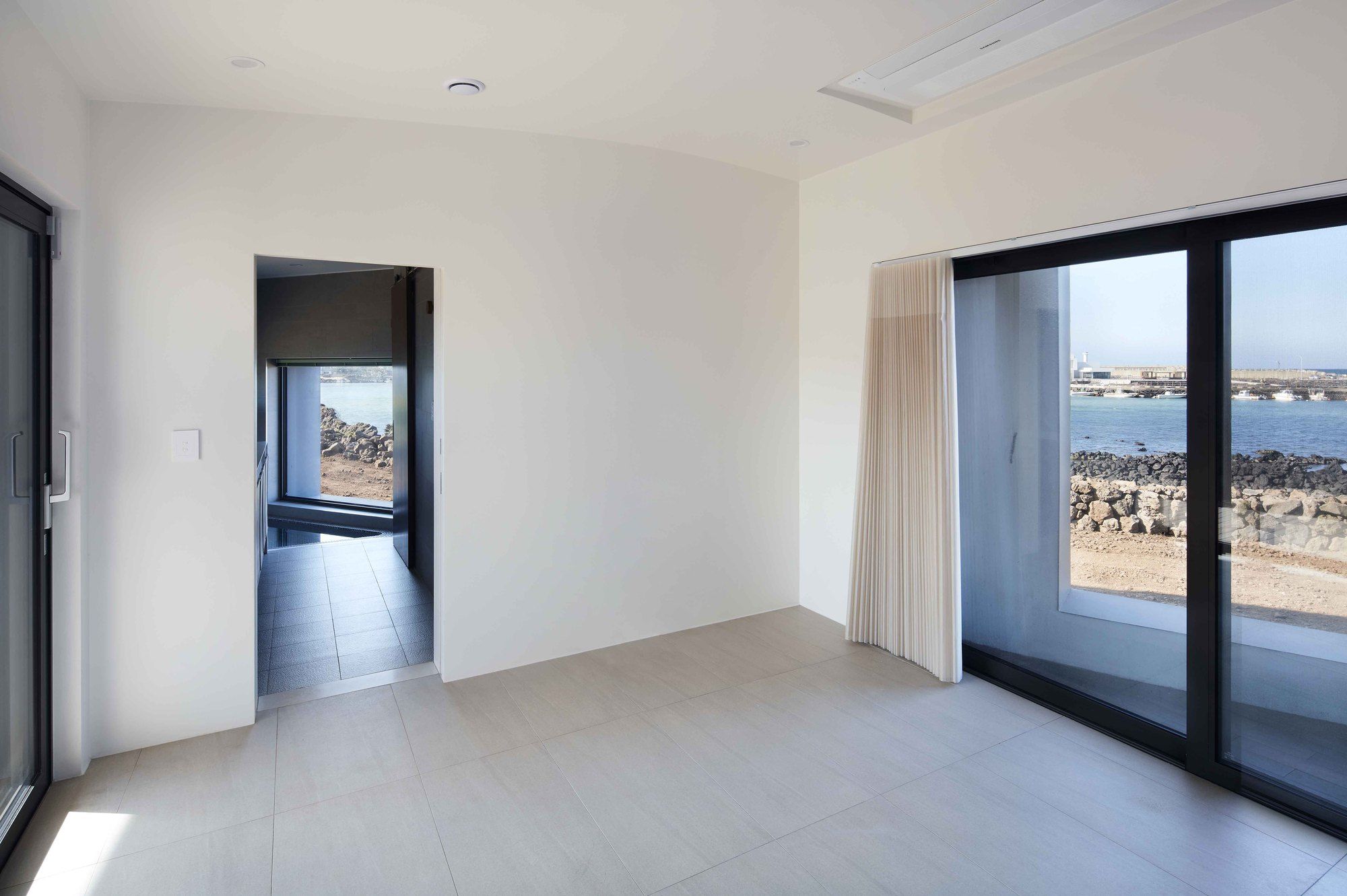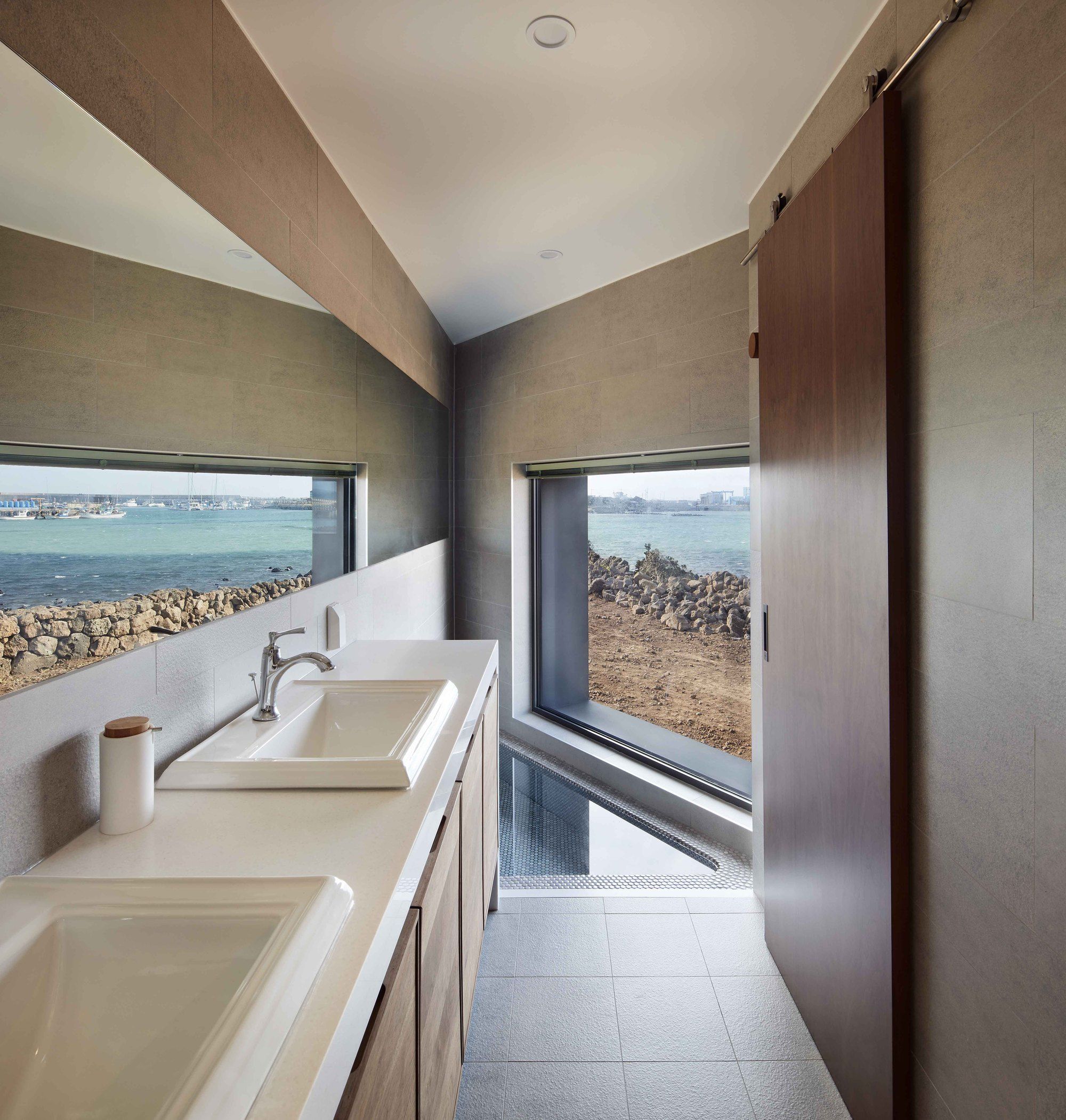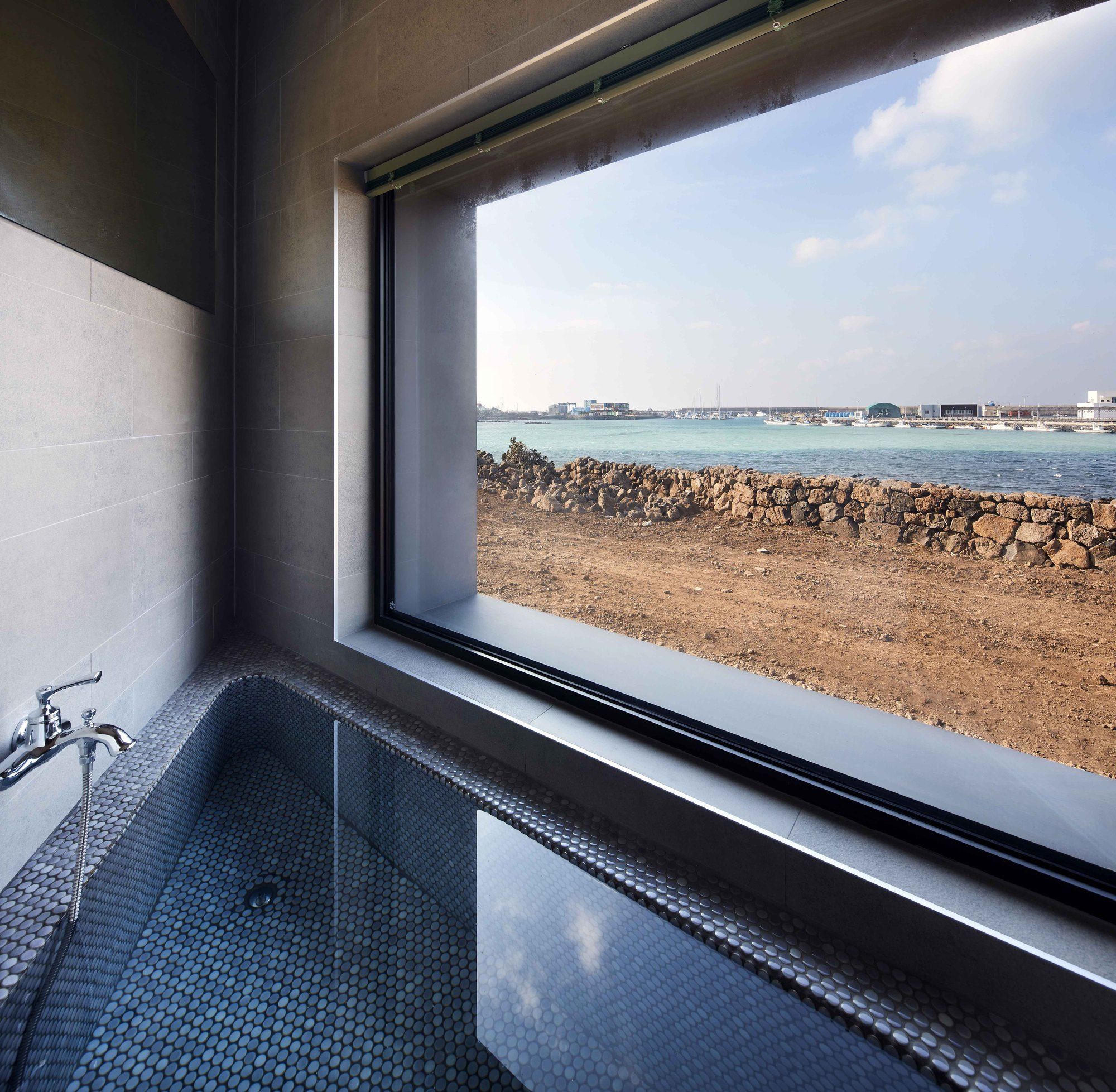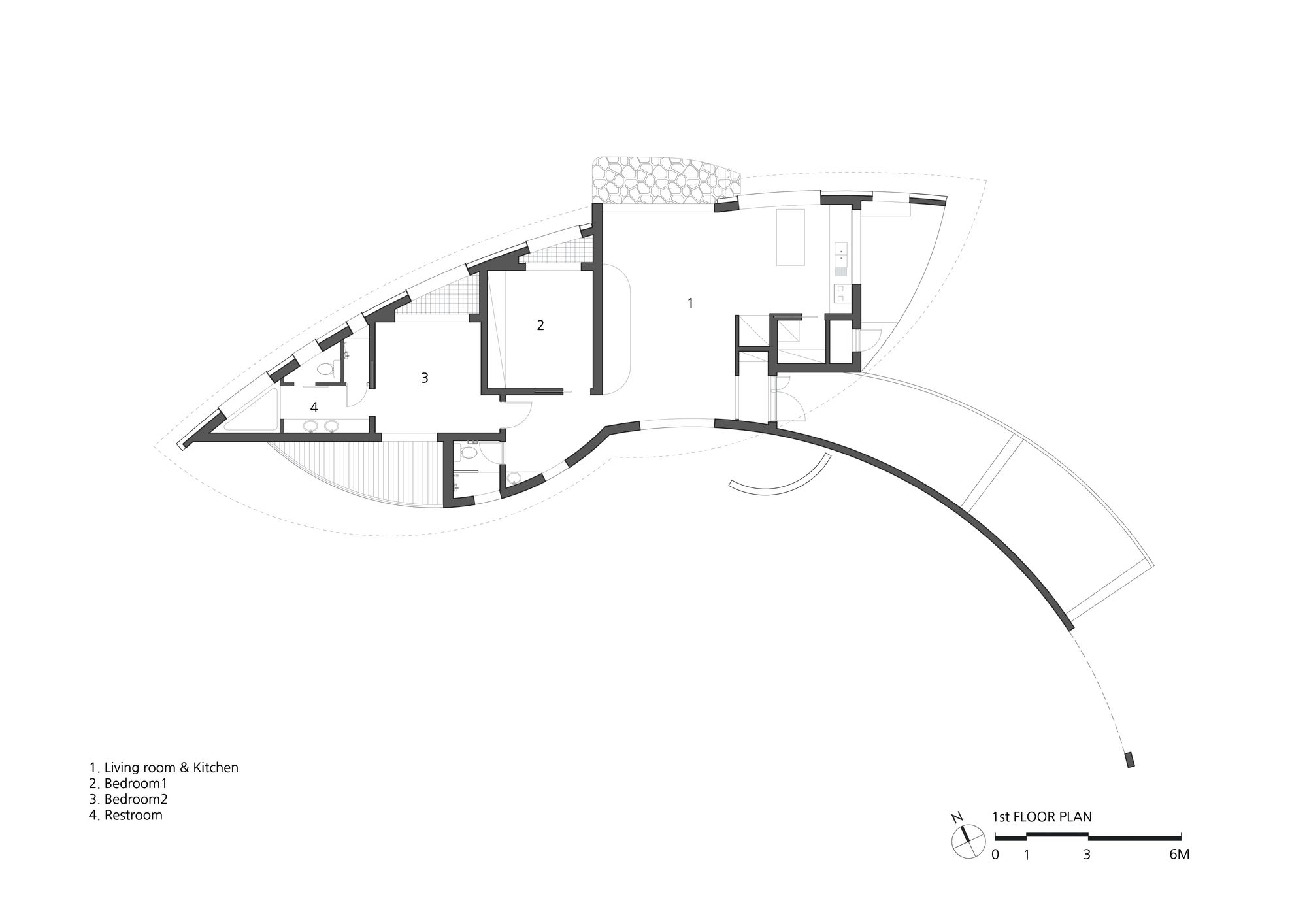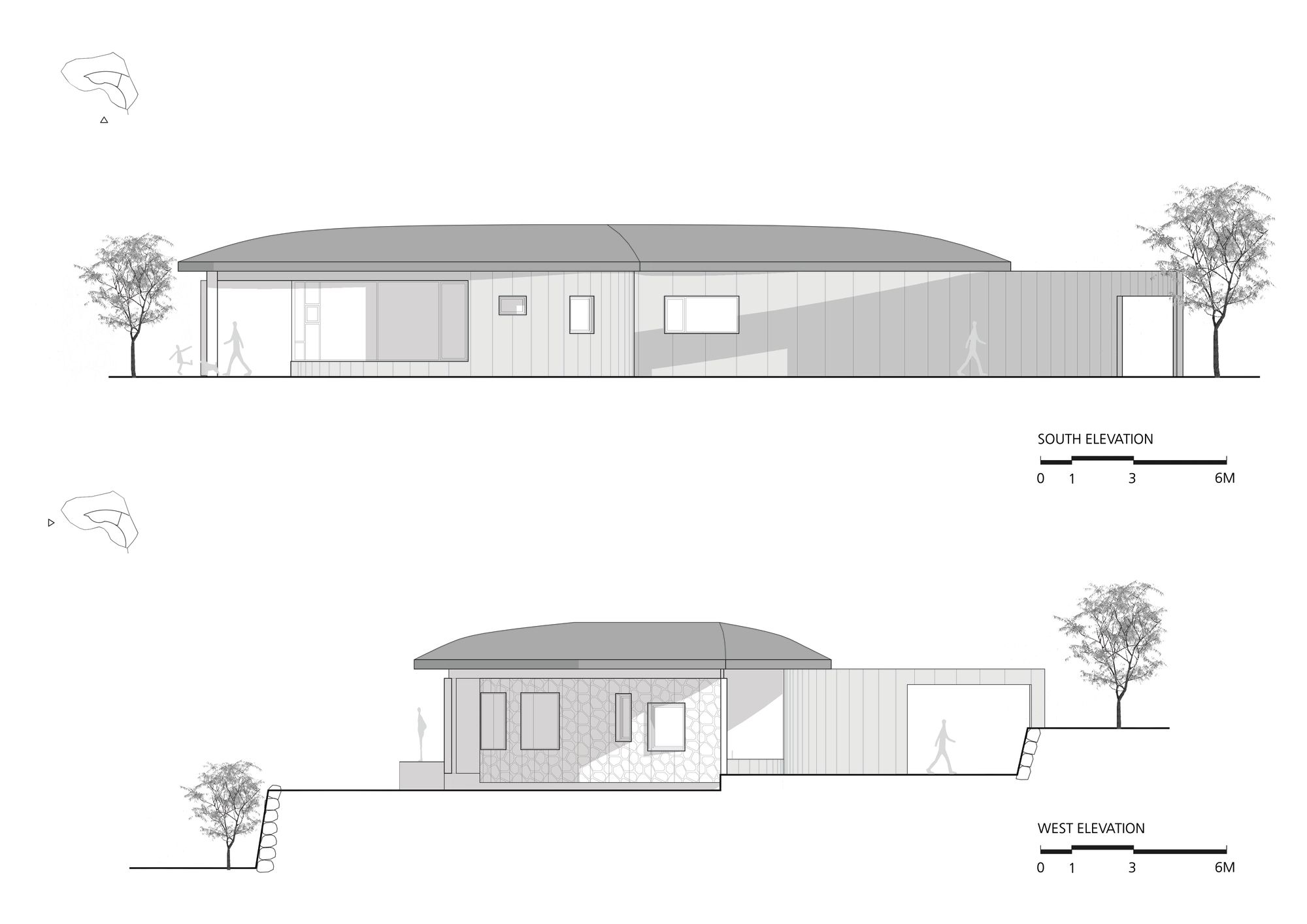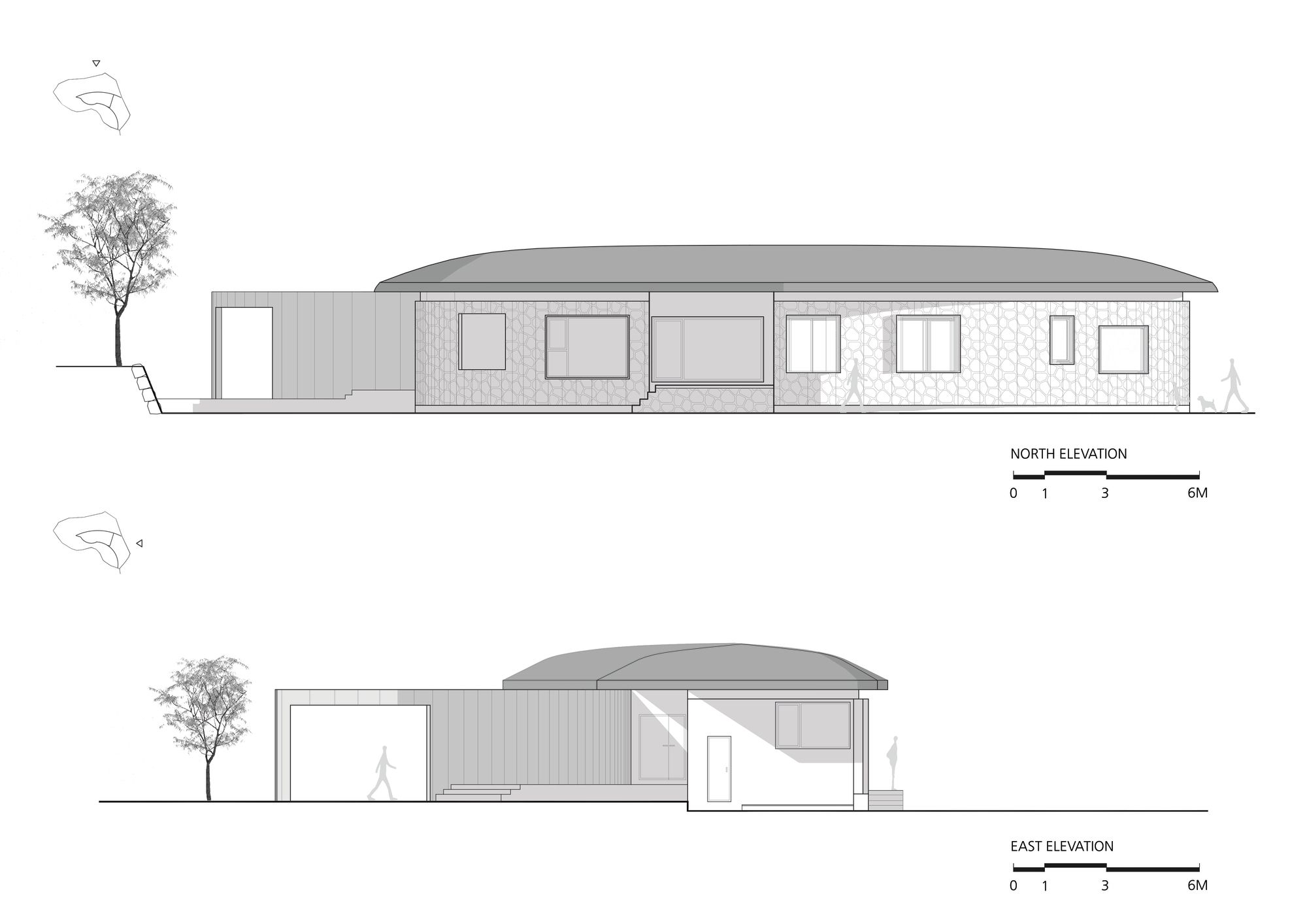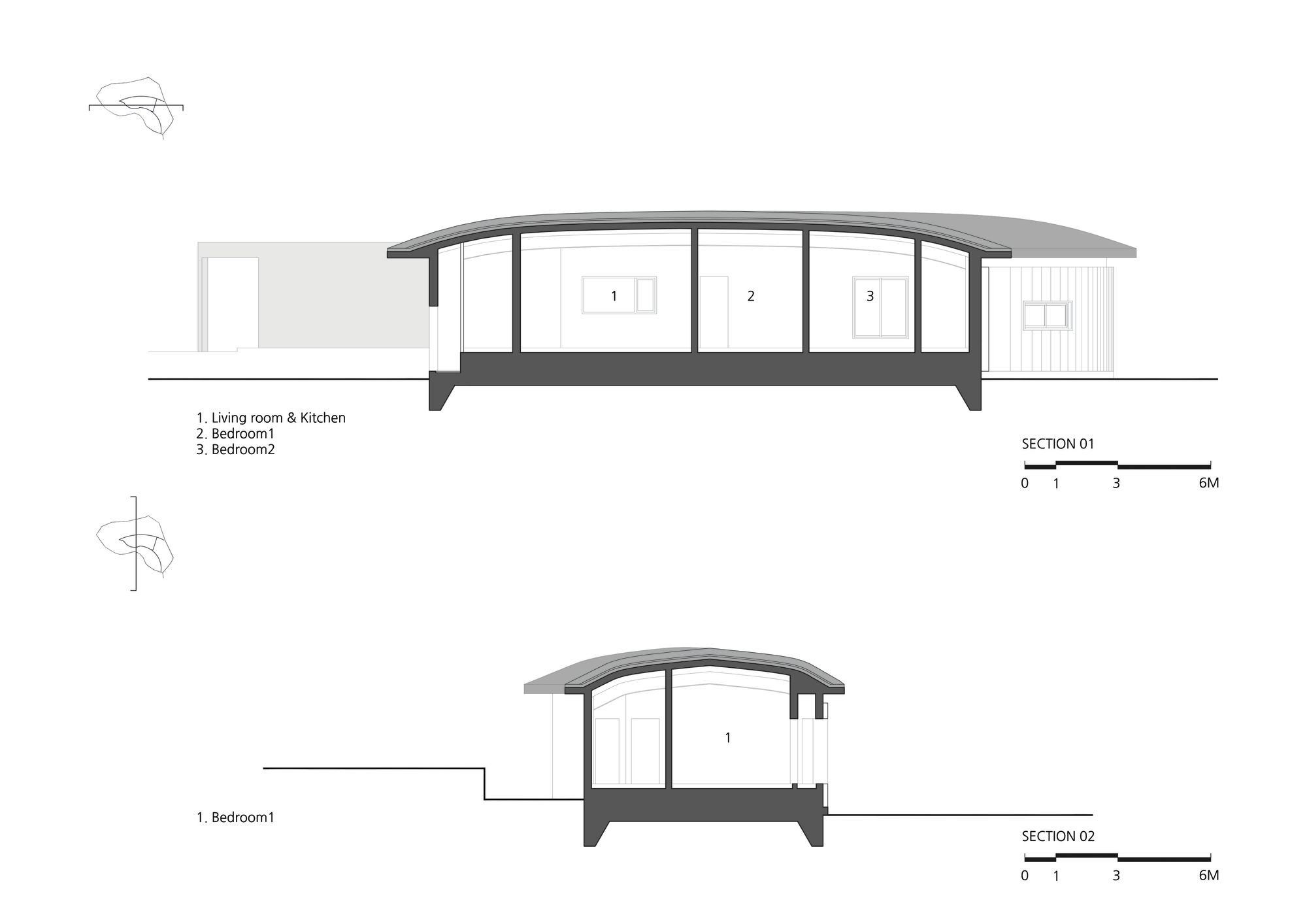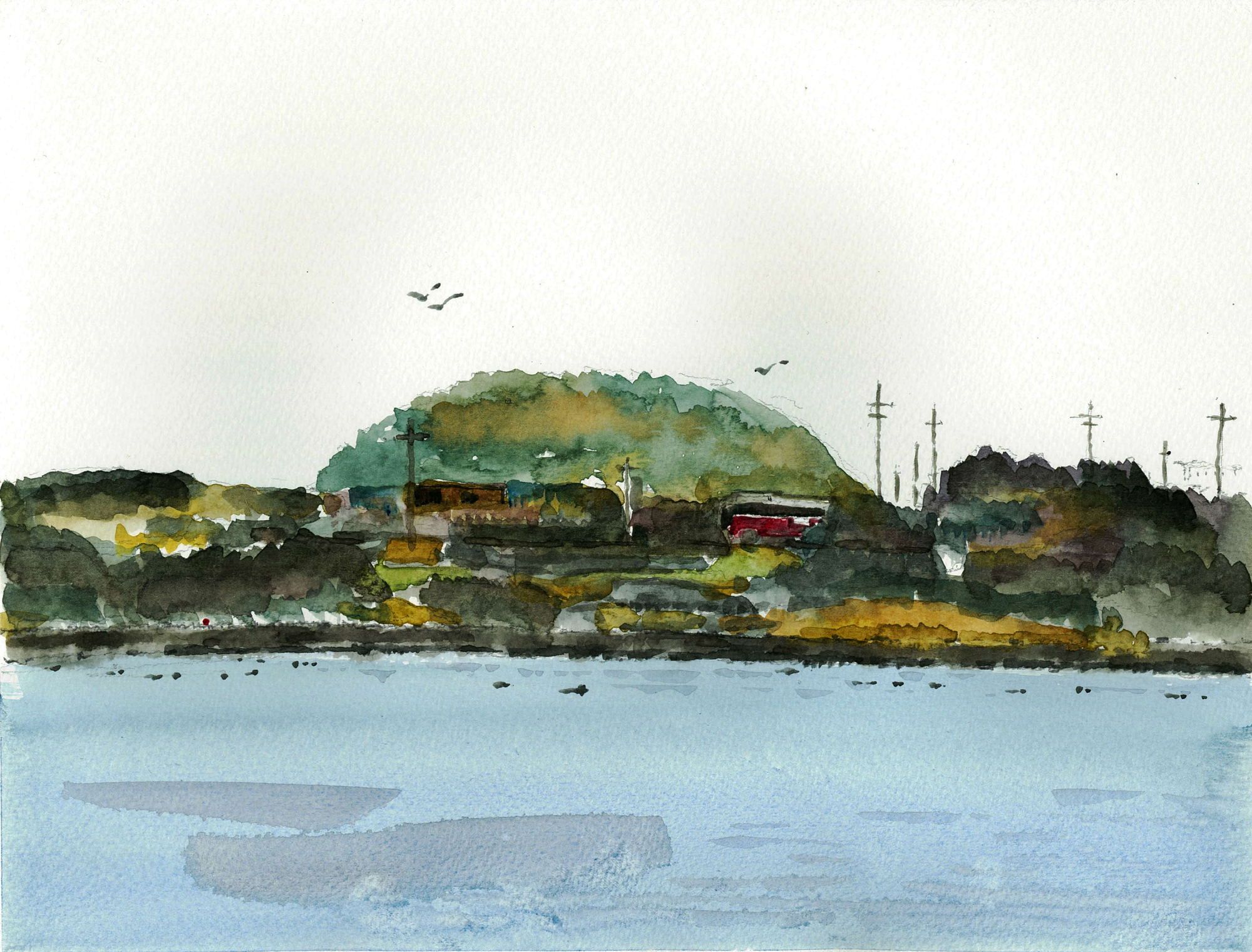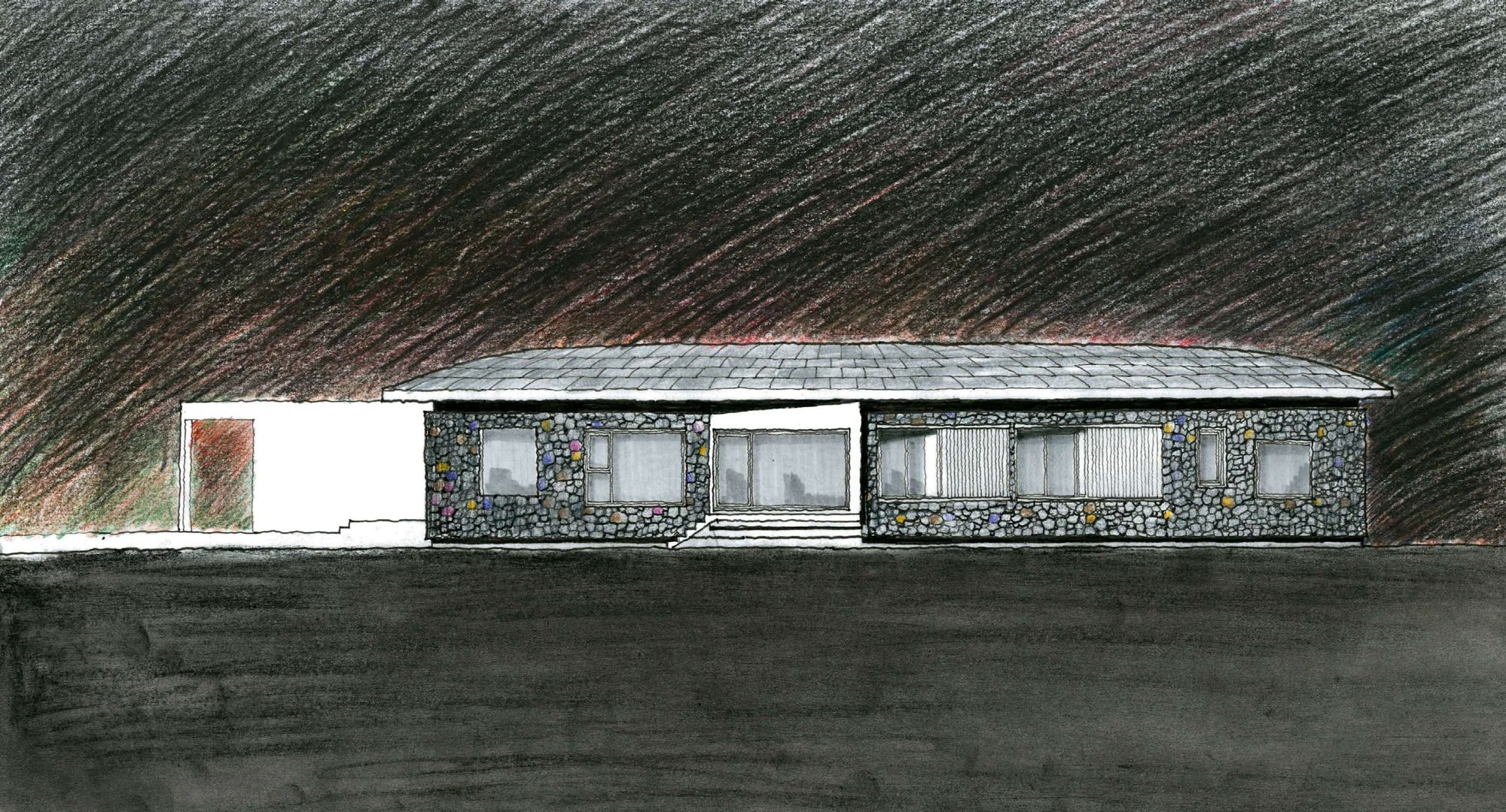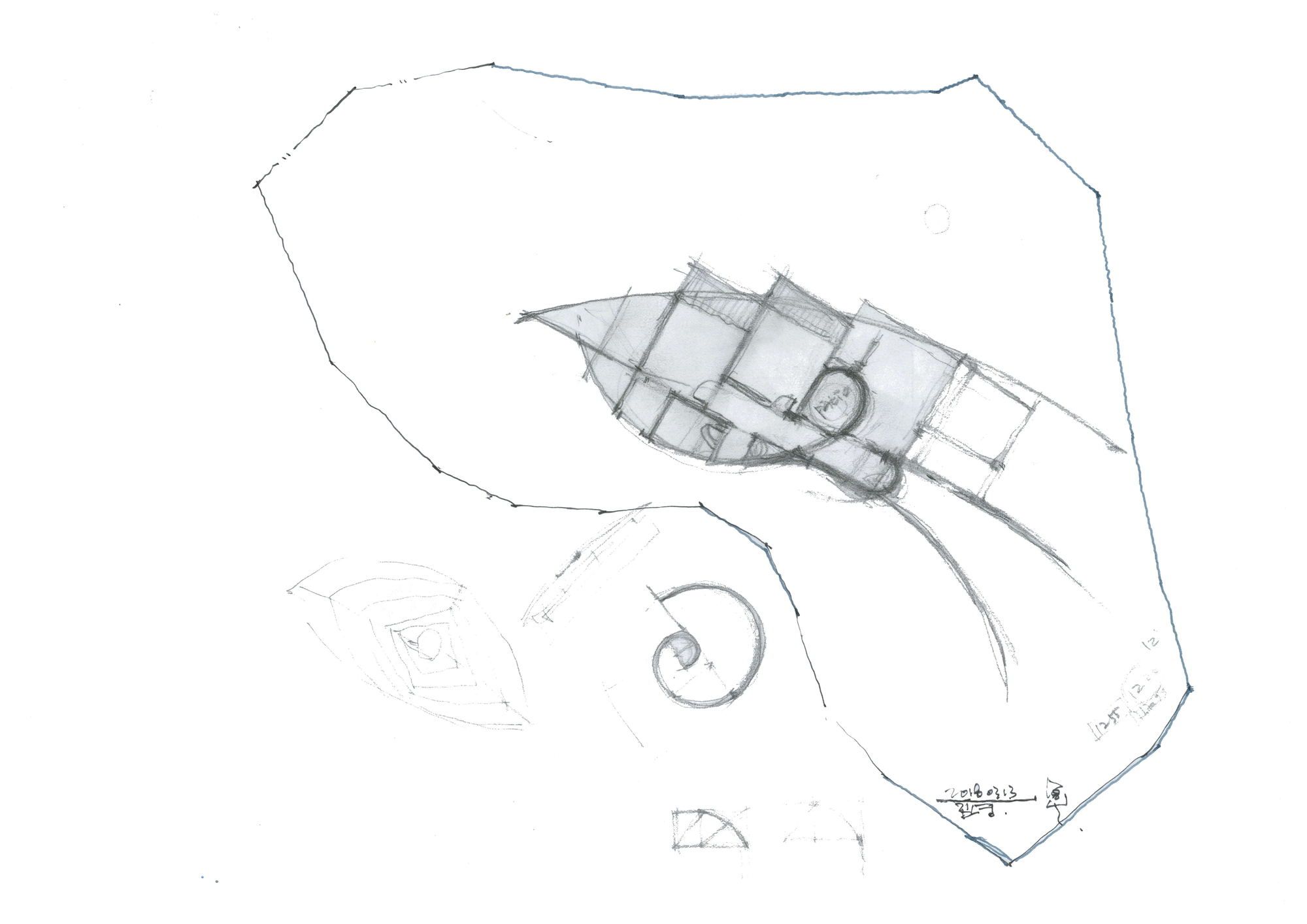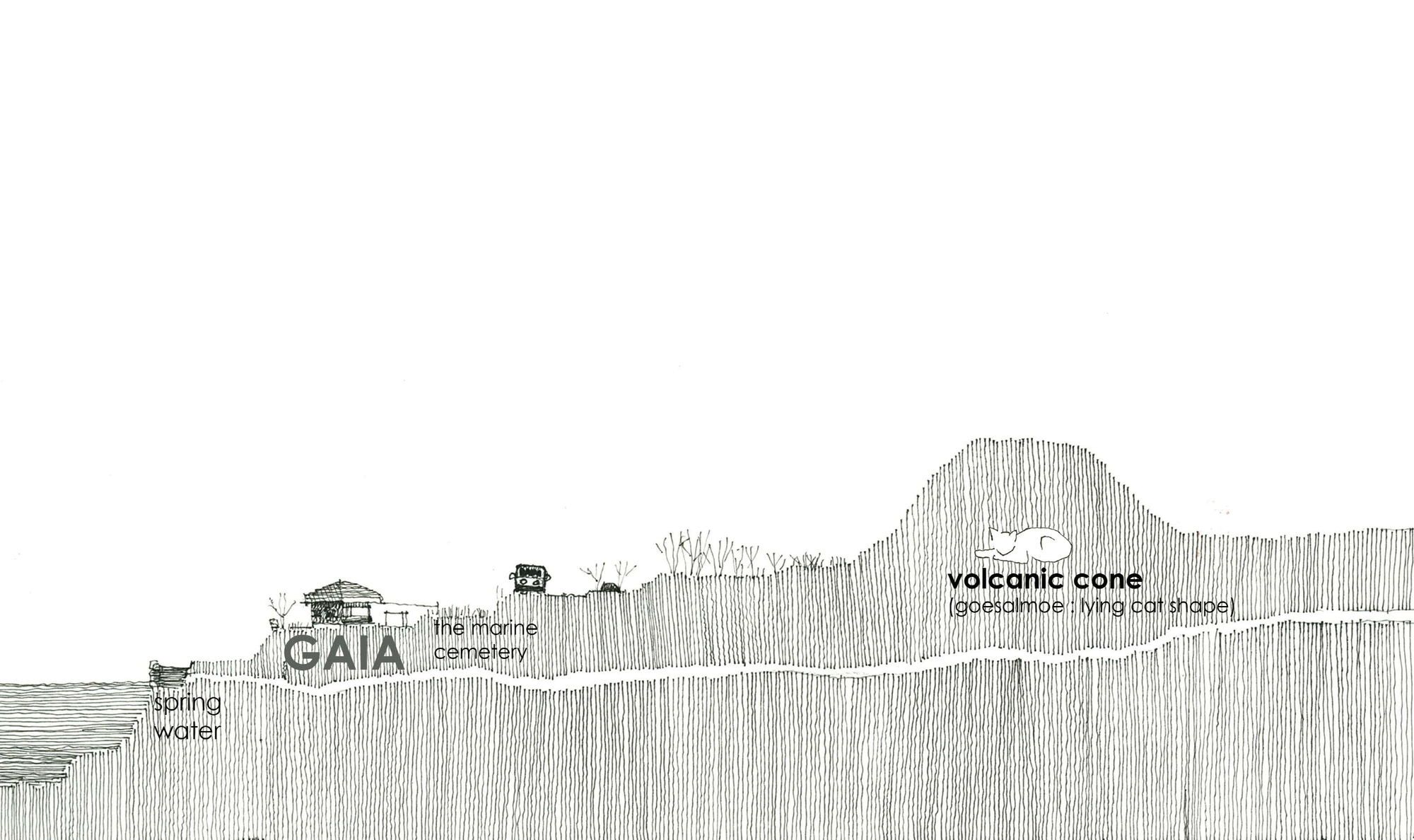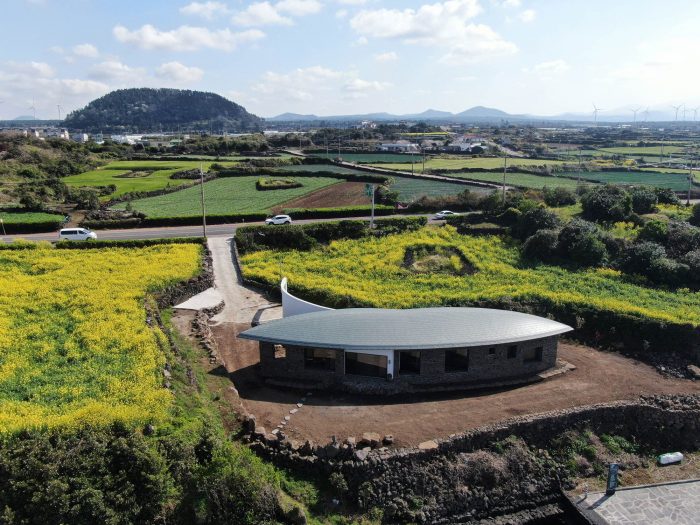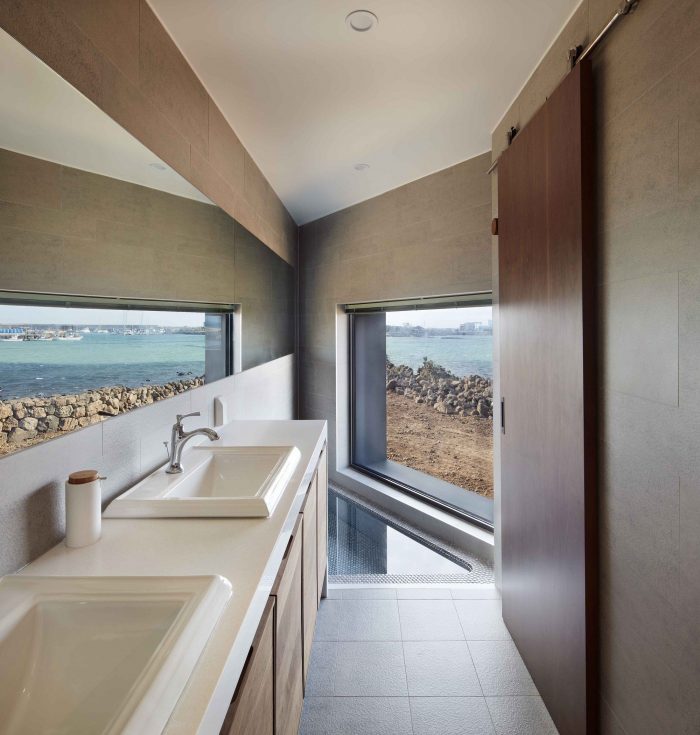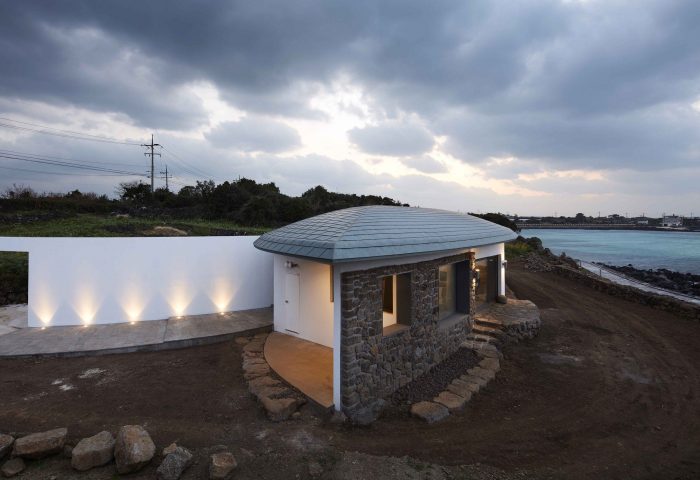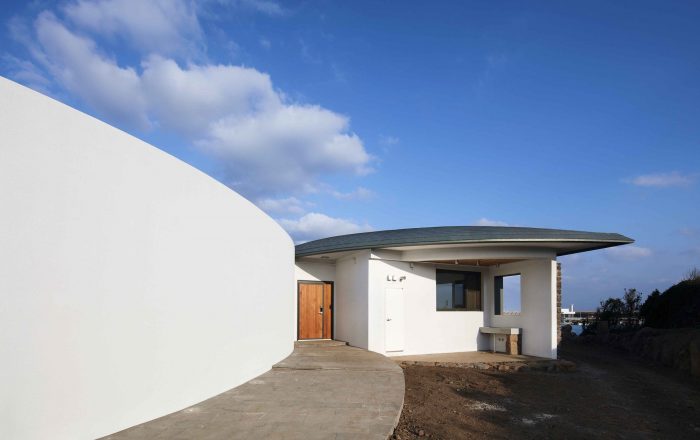Casa Gaia
Jeju Island, which has traces of volcanoes here and there as if it had just finished erupting, is a land where maternal nature is strongly felt. It is a place where a combination of black soil, cobalt-colored sea, and haenyeo (female diver), who live strongly in the sea, create a landscape.
Casa Gaia was built on the coast in Gimnyeong, Jeju Island. To the north, you can see Kimnyeonghang Port, and to the south, a roundish oreum (volcanic cone) called Goesalme (Mosanbong) works as a backdrop to the site. Gaia is the Greek mythical goddess of the earth, the mother of all things and the mother of the gods, and the mother of creation. The house was named after the god to symbolize the earth, the origin of all living things, because the design of this house began and ended with the awareness of the earth and site.
The site of the house was a tranquil land that was directly attached to the sea as if it were a resting place before oreum (volcanic cone) crossed the fields and crossed the two-lane road to dip its feet in the sea. It was, so to speak, a buffer zone that slipped between the volcanic cone Goesalme and the very soft jade-colored sea. And it was a place where people could look to the sea as they passed the road leading to Gimnyeong-ri from Jeju City.
The client is a Jeju native couple who have long owned the land. What we agreed with the clients from the beginning was never to build a house with loud shapes and colors, which are unfortunately common in the scenic spots along the Jeju coast. The most important thing was to build a house that could withstand the sea breeze, like the old stones of Jeju Island. First of all, we decided to reduce the size of the house, which had been originally considered as two floor structure. The height of the roof is lowered so it does not block the view toward the sea from the adjacent road. We thought it would be better if the designed house looked like an old residence of Jeju Island.
Thus, the roof line is gentle and curvaceous to look like an ascending line when viewed from the opposite port of Kimnyeong. Also, the outer wall facing the sea is decorated with black Jeju stones, considering the natural harmony with the surrounding colors. On the contrary manner, when looking at the sea from the road, the white wall that runs from the soft curved wall and the gray roof that looks like an extension of the sea were made to lift its wings and make light connection.
The floor plan of the building was shaped by offsetting the outline of the irregular shaped ground. Offsetting heart-shaped site resulted a roof in a smooth curve of lips. The lip-shaped roof is not recognizable on the ground at eye level. The figure, which can only be seen from the sky, seemed to symbolize the strong femininity of Jeju Island, which endured countless rain and wind. Reflecting the simple movement of the owner entering the house for daily rest, the entrance to the house was placed at the east end, and a triangular bathroom with an ocean view at the west end. The rest are two rooms, a living room, a kitchen, and other general functions for a simple life. The interior space made of a gentle curved wall is warm like a calm mother’s arms, and is filled with the sun, wind and sea that is the nature of Jeju.
Project Info:
Architects: Studio GAON
Location: Jeju-si, South Korea
Area: 136 m²
Project Year: 2020
Photographs: Youngkwan Kim
Manufacturers: American Standard, Kohler, Eagon, Younhyun Trading
